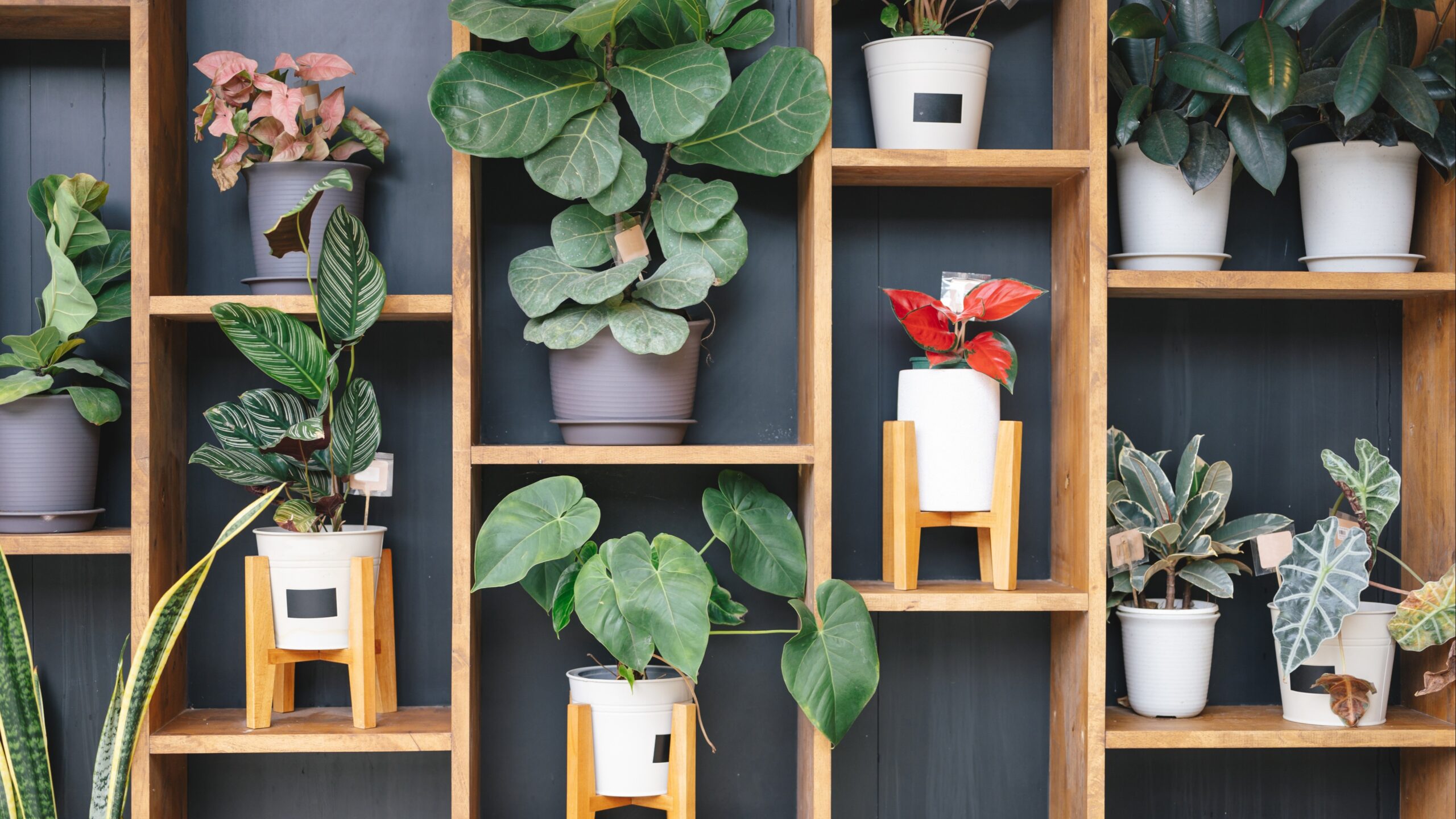
You don't need a spacious garden to flex your green thumb. Some plants can thrive on an apartment windowsill or right under your office light. Even if you do have a yard with plenty of room for gardening, it's also nice to own some low-maintenance greenery that can liven up your indoor space. Besides being part of the décor, houseplants can serve a variety of purposes, from ones that function as air cleaners, like the spider plant, to others you can gain medicinal use from, like aloe vera.
If you're not into having pets, houseplants also make great companions. Like a pet, you have to cater to their needs and give them attention to keep them alive. Some studies have even found that talking to your plants can help them grow faster. Unfortunately, it's likely they won't talk back, but they're great at hearing you out. If you feel like letting them know about how your day went, go right ahead.
More from MamásLatinas: Spring rituals to attract happiness, love & prosperity
Choose houseplants based on your lifestyle. While many houseplants can thrive without much attention for long periods of time, some do require more tending. If you're forgetful or spend a lot of time traveling, then a philodendron plant might be the best choice for you. If you have more time and are looking to turn your black thumb green, then plants like African violets are probably a good choice. Some plants will only thrive in places with a warmer climate even if they're indoors, while others are fine year-round. Plant needs will differ, but for some, all they need is some sunlight, water, and fertilizer.
With proper research, you can decide which houseplant is best for you. Luckily, we already started for you. Here is a list of plants that would make a great addition to your home and why.
The bamboo plant will set the right tone for your home.
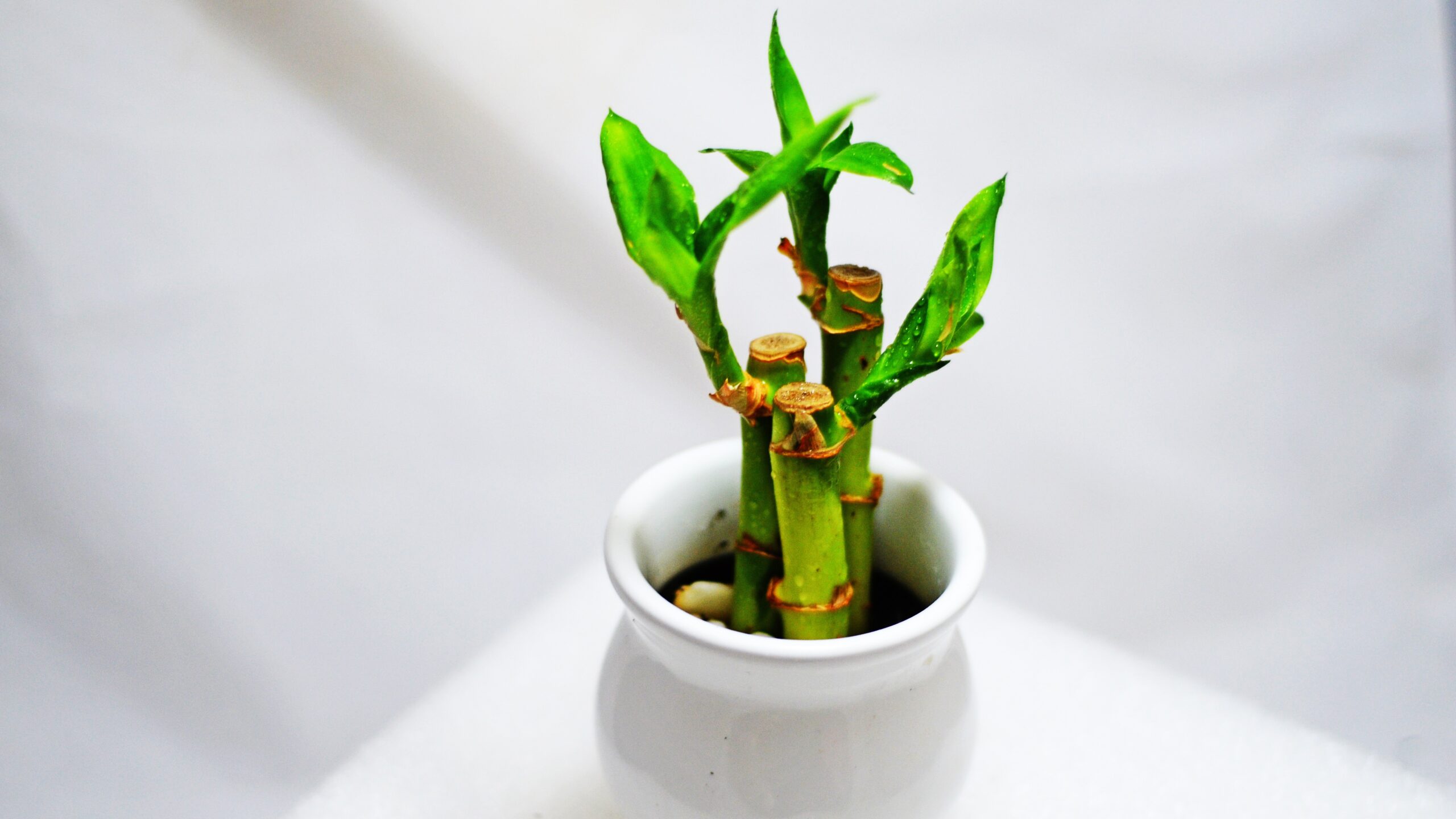
Whether you are decorating a new home or trying to fix something older, the bamboo plant is right for you. Though it's not a member of the bamboo family, the houseplant sold as a "bamboo plant" is thought to bring fortune, money, and good luck to its environment. It is a plant that is universally known but so often missing from a home. In addition to potentially bringing good fortune, it's an attractive plant that doesn't need much care.
Bamboo plants require minimal maintenance.
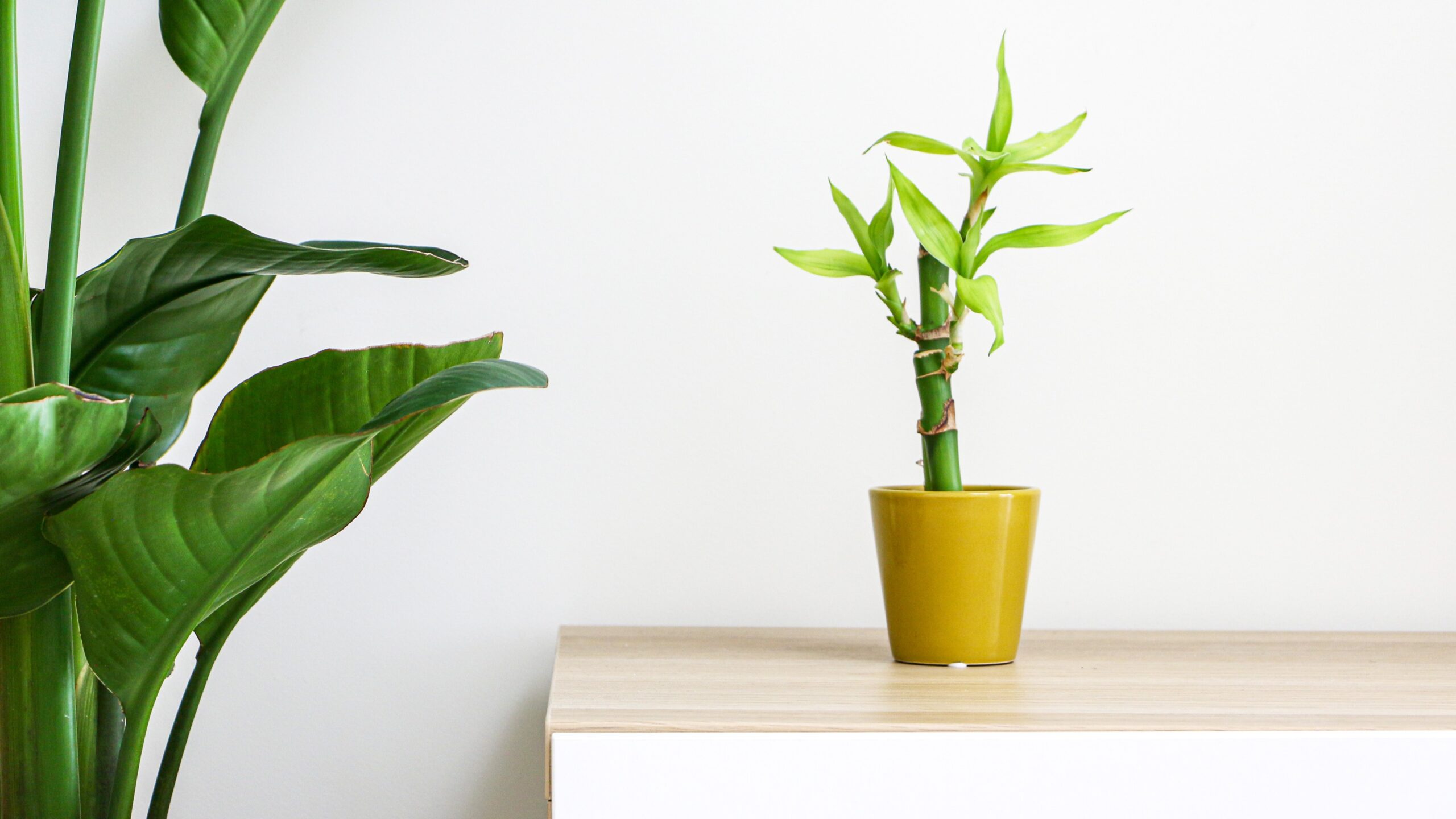
Although some plants require much love and care, the bamboo plant may help you by cleaning the air. Unlike other plans, it requires minimal care and only a little light, making it a plant that is perfect for your desk or bedside table. With the positive energy it could bring, you will not have much to worry about it.
This plant that's shaped a little like a spider is great addition to any home.
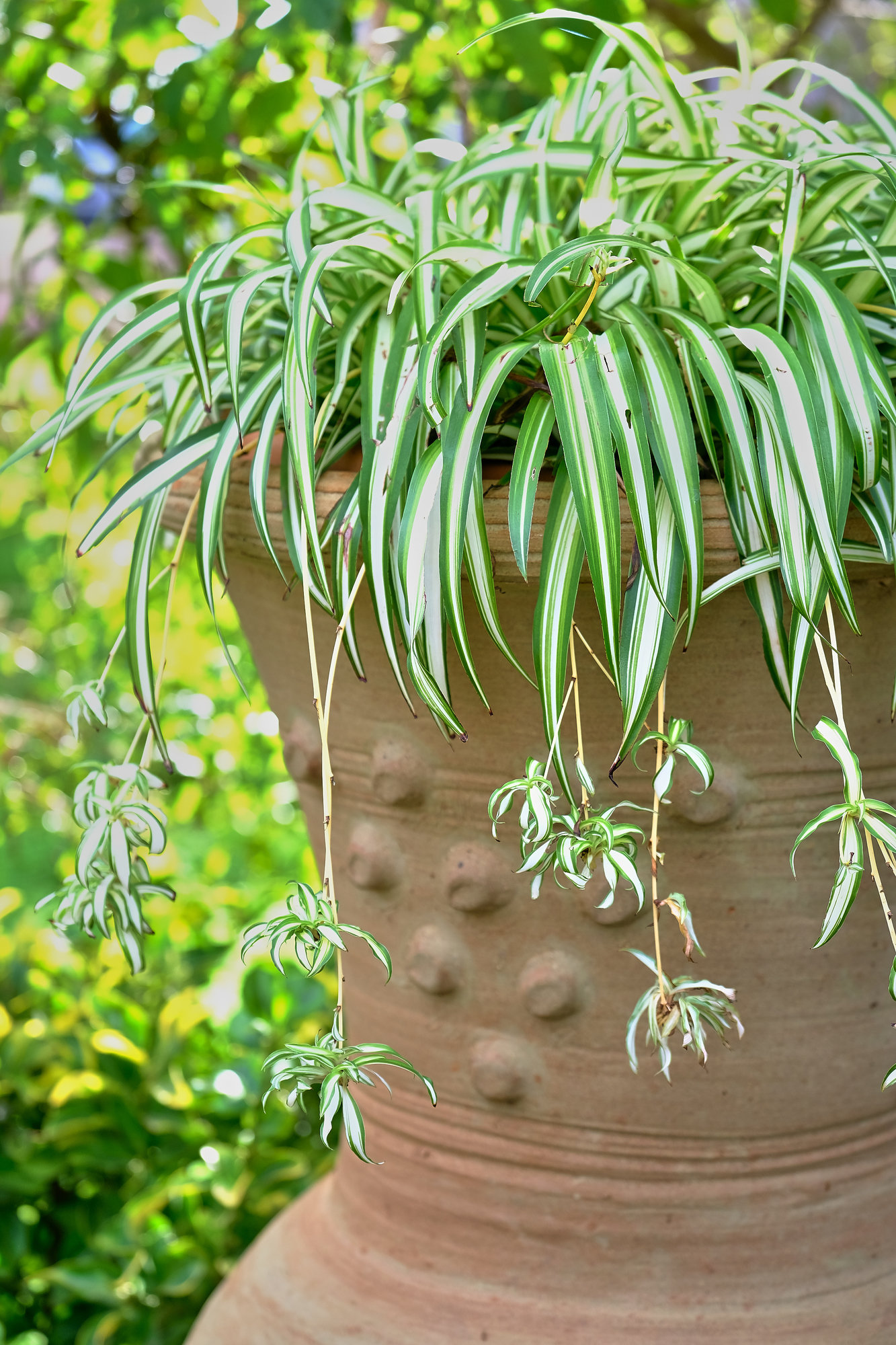
The spider plant (Chlorophytum comosum), also known as an airplane plant, consists of a mother plant of arching leaves, with tiny plantlets that hang from thin stems, resembling spiders on a web. The leaves are usually a shade of green with a white center stripe. Mature plants can also grow small white flowers.
The spider plant may be one of the easiest to grow.

To allow it the space it needs to thrive, a spider plant is best grown as a hanging plant. Spider plants are low-maintenance, making them great for people who don’t have too much time to cater to them. The plants grow best in bright light, but can still handle a semi-shady spot. They should be watered more during the summer than winter and prefer fast-draining and well-aerated potting soil.
Grow a money tree plant in your home for some luck.

If you’ve seen a plant with a cool braided trunk, then you’ve come across a money tree (Pachira aquatica). In their natural habitat, these trees can grow up to 60 feet tall, though the braided trunk is only a feature when manipulated by cultivators in a nursery. Its green leaves and trunk are thought to bring luck, fortune, and wealth to its owners.
This money tree thrives in indirect light, making it a great indoor plant.
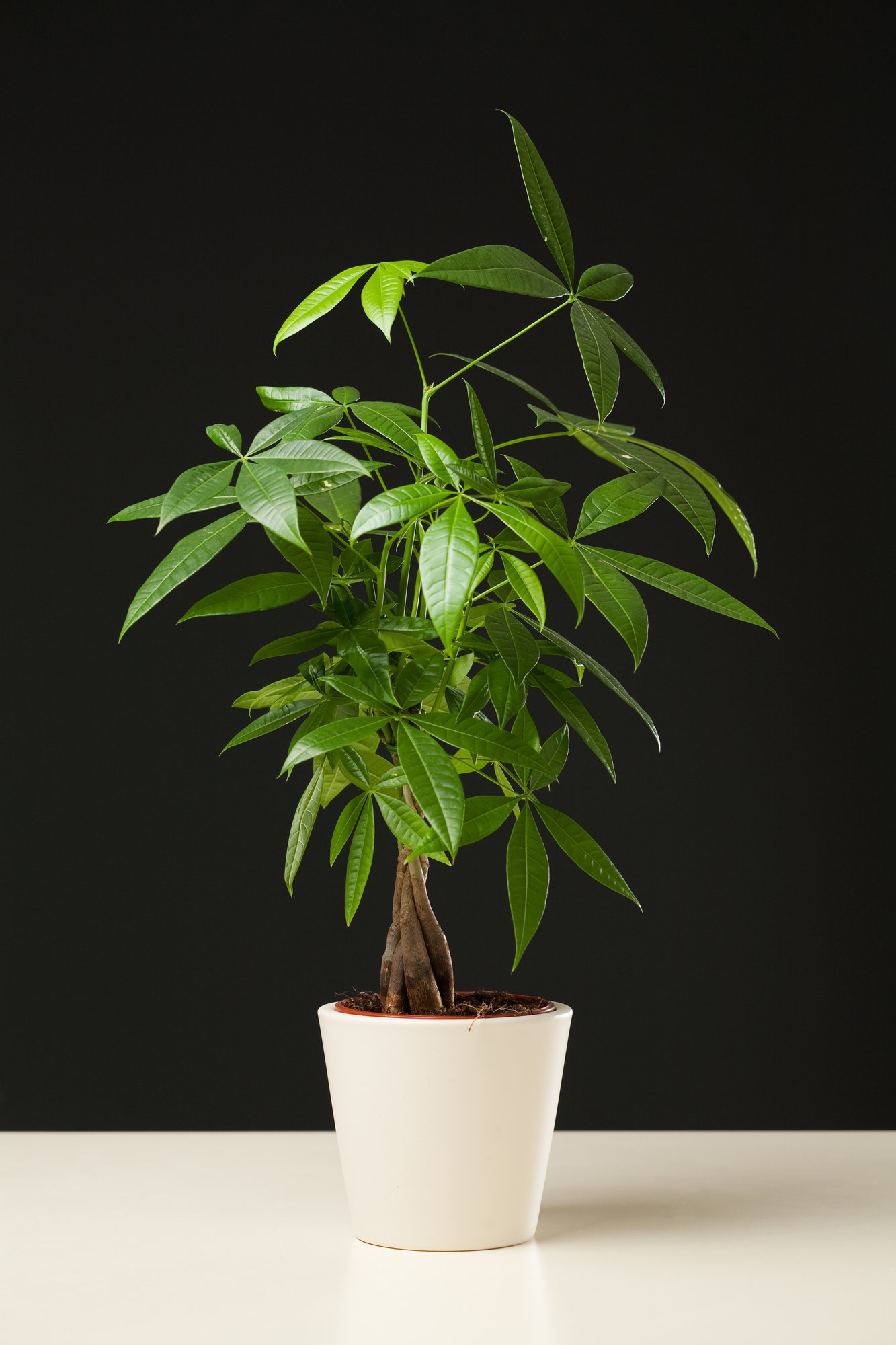
Direct sunlight and too many drafts can lead to leaf loss, so it is best to place these plants in locations with bright, indirect light. This plant loves humidity, but its soil should be allowed to dry out between waterings and set in a pot with good drainage. To maintain the trunk’s braided shape, you can guide its growth by binding the top of the trunks tightly.
This plant is an easy way to add color and texture to a home, without flowers.
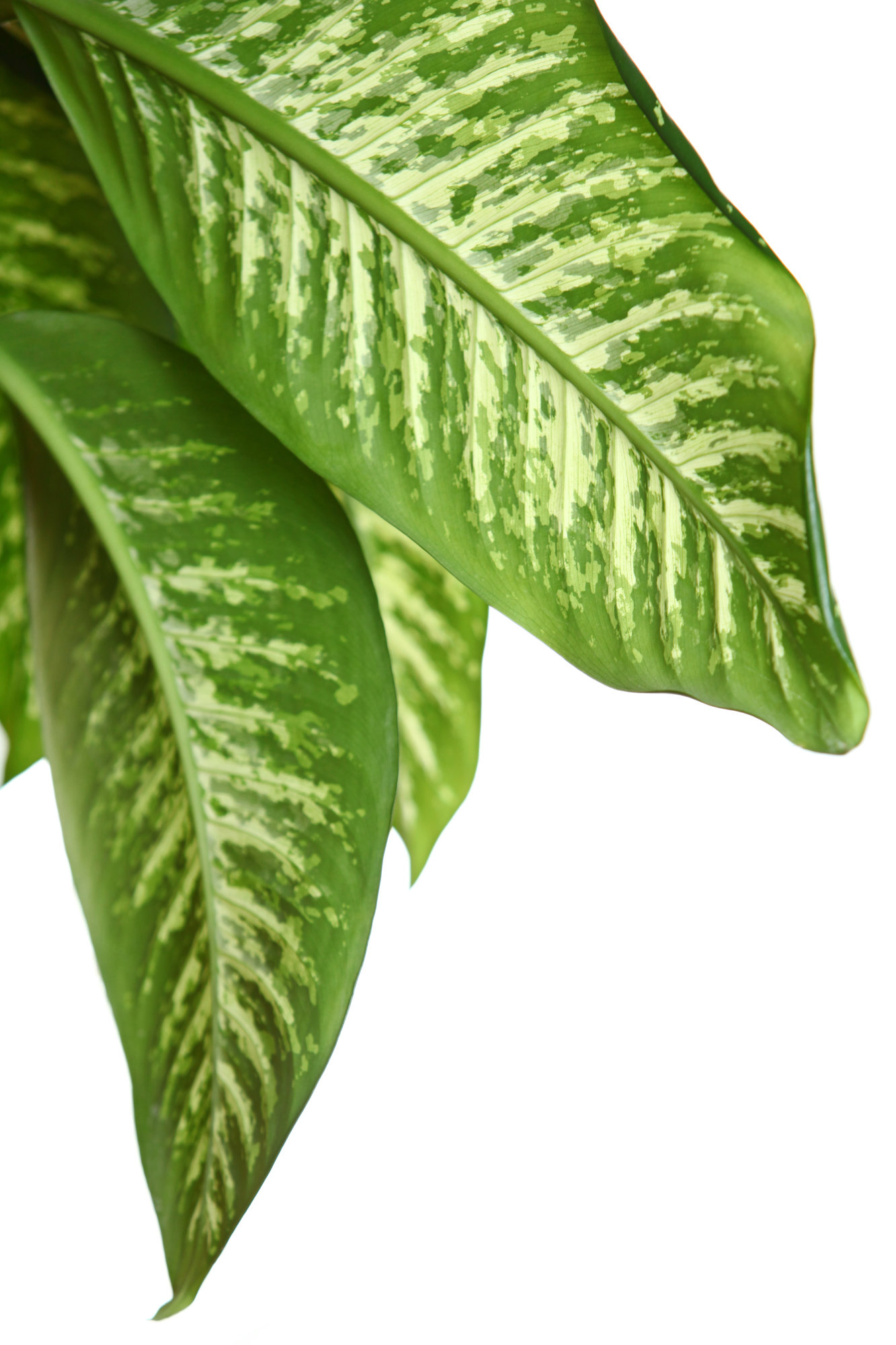
Dieffenbachia, or dumbcane, will add a tropical feel to any space. Its green leaves are usually variegated with shades of cream, yellow, or white and is best grown along an empty wall or large furniture. Though it’s relatively low-maintenance, the plant must be handled with caution. Its sap can cause numbness when touched or handled near the mouth and may be poisonous to pets. It's not a good choice for homes with small children.
Dieffenbachia does best in humid locations with plenty of light.
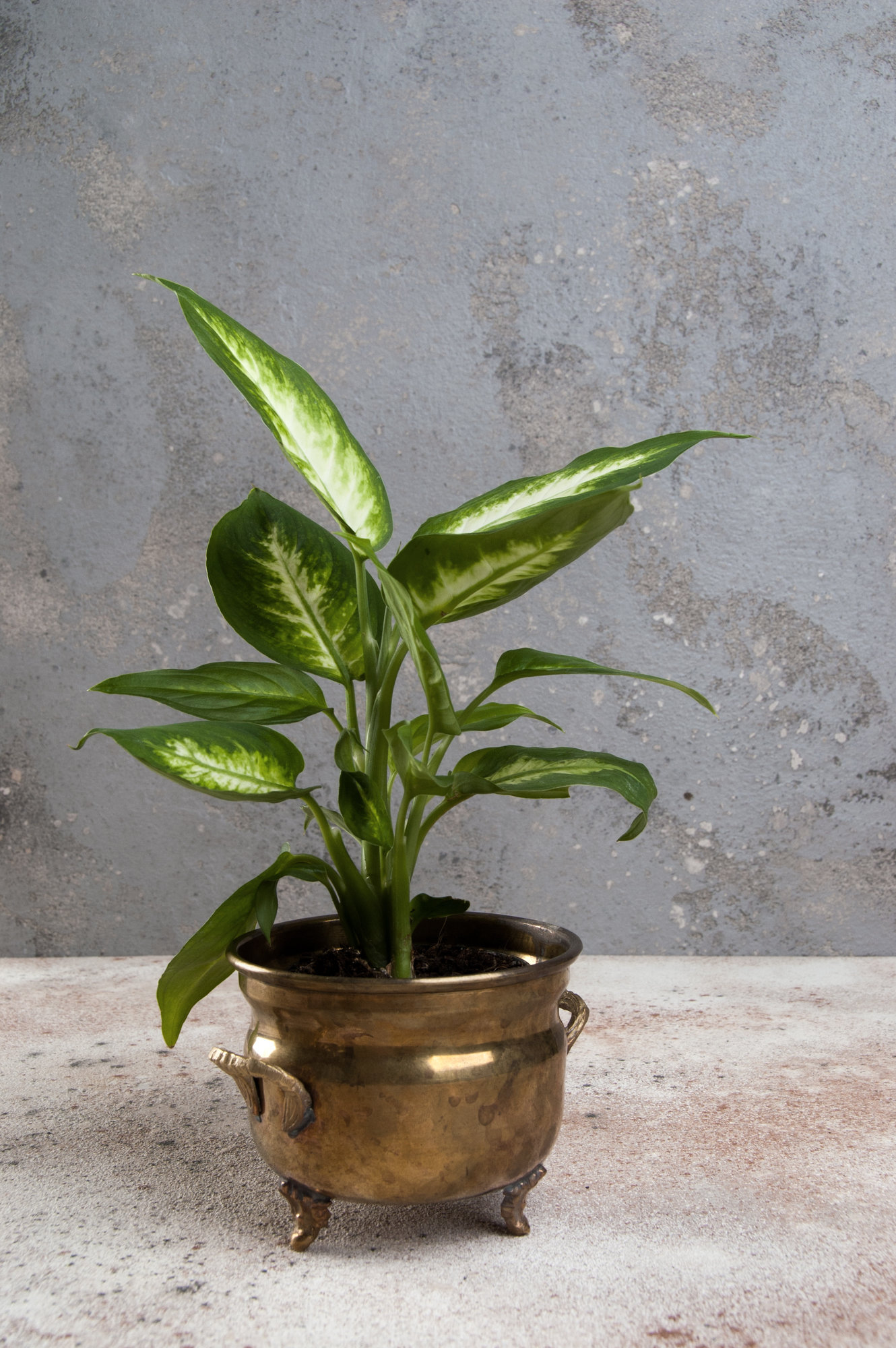
If the air around the plant is too dry, its leaves and edges may turn brown. Dieffenbachia will survive in areas with low light, but its growth might slow down. The plant must be regularly watered, but it’s best to avoid soggy soil if you don’t want to risk overwatering it.
Skip the usual poinsettia this holiday season and decorate with some Christmas cactuses instead.
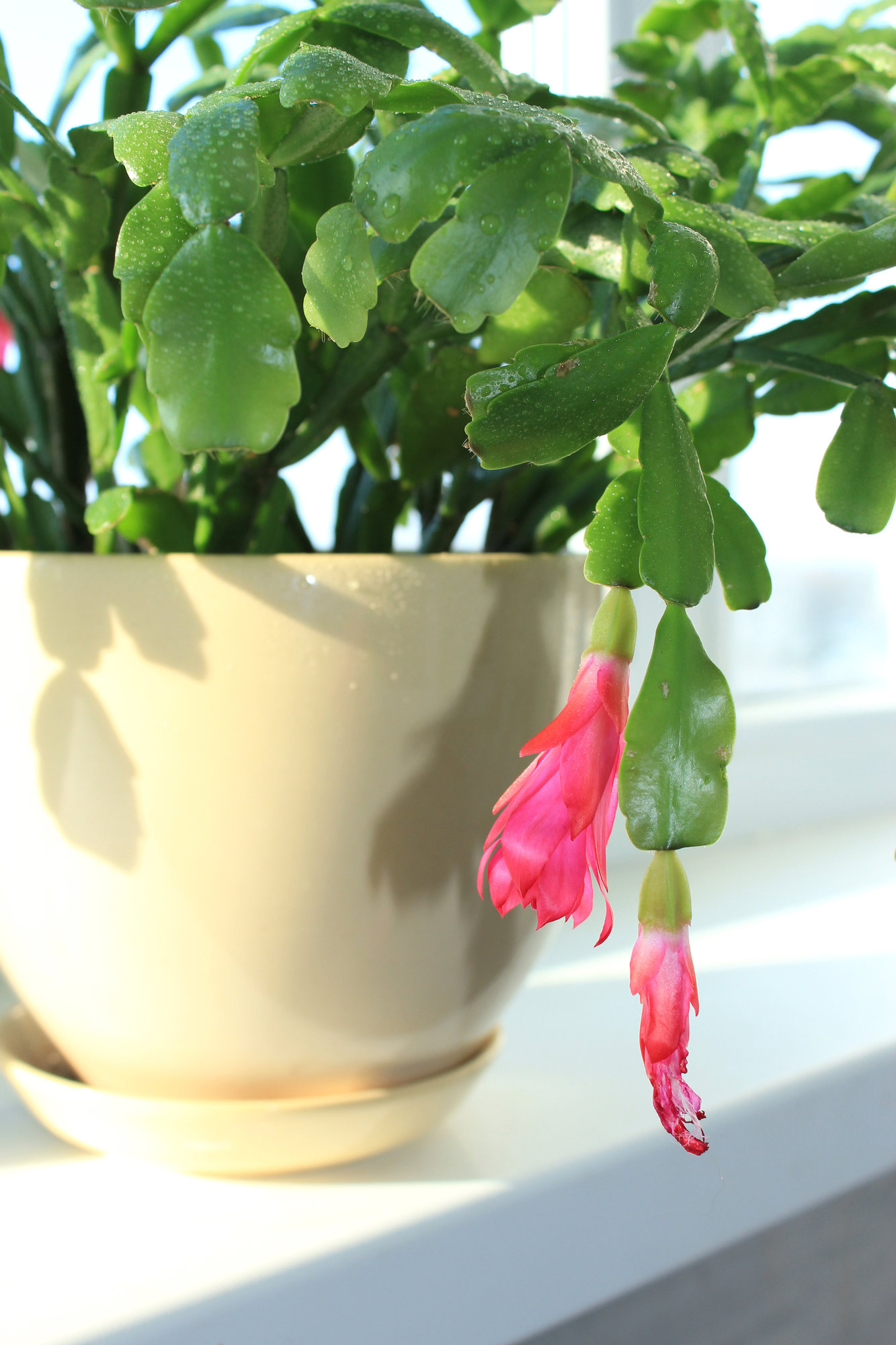
As the name implies, these plants enter their blooming periods around the holidays. Christmas cactus (Schlumbergera hybrids) are made up of green hanging branches that can reach up to 3 feet. When they bloom, flowers can appear at the tips in shades of lilac or pink. Their flowering period will span about a few weeks.
Though cactus are typically known as desert plants, Christmas cacti are native to Brazilian rainforests.
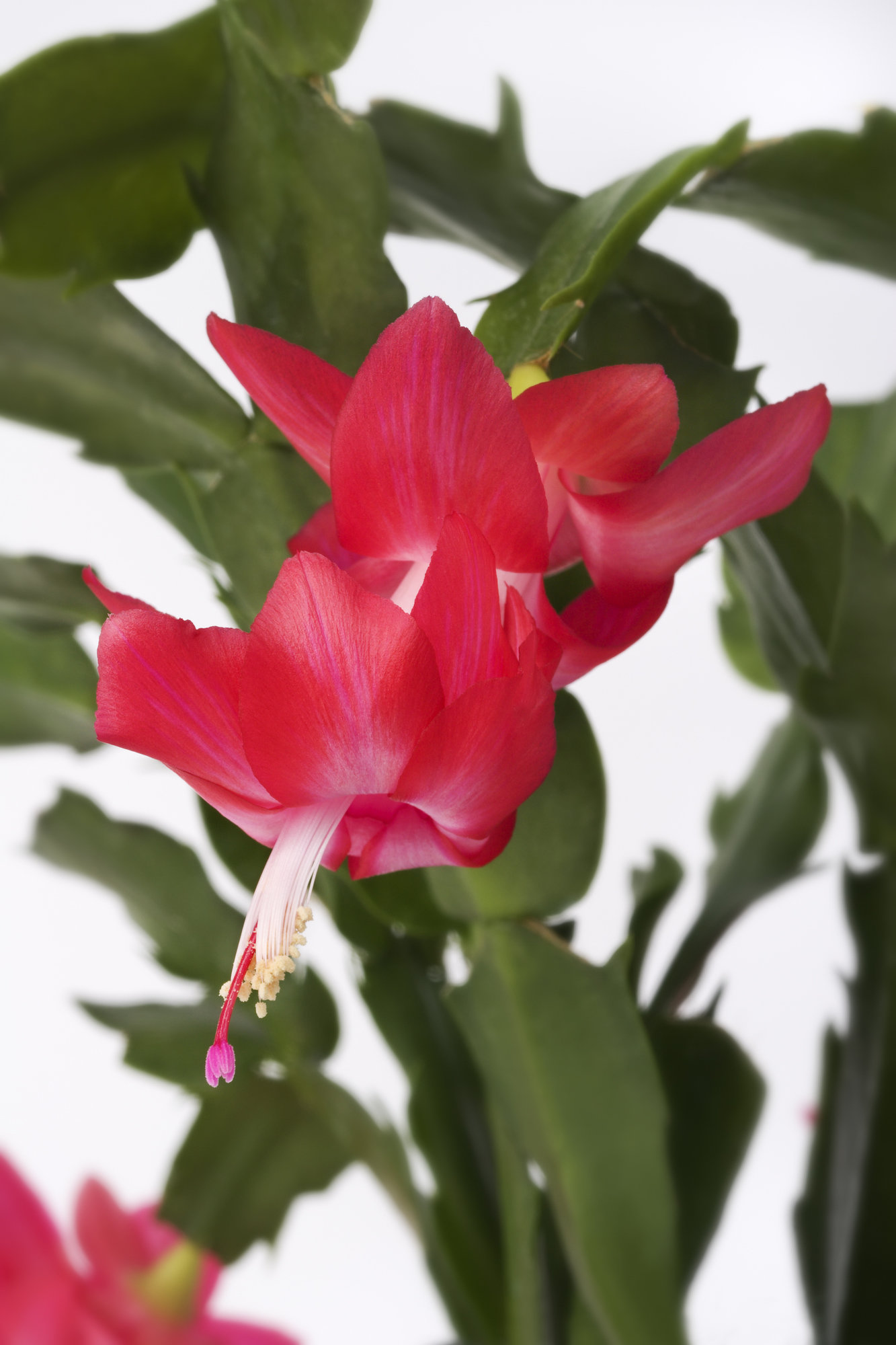
It’s important to water Christmas cactuses because they're native to a humid climate. They should be kept in bright, indirect light, but can be kept in a shady spot during the summer. Make sure your soil doesn’t get too dry, and that the plant isn’t exposed to any type of stress, like a sudden temperature changes. This will cause the cactus to lose its blossoms.
Jade plants are sometimes referred to as a money plants and are believed to bring luck to their owners.
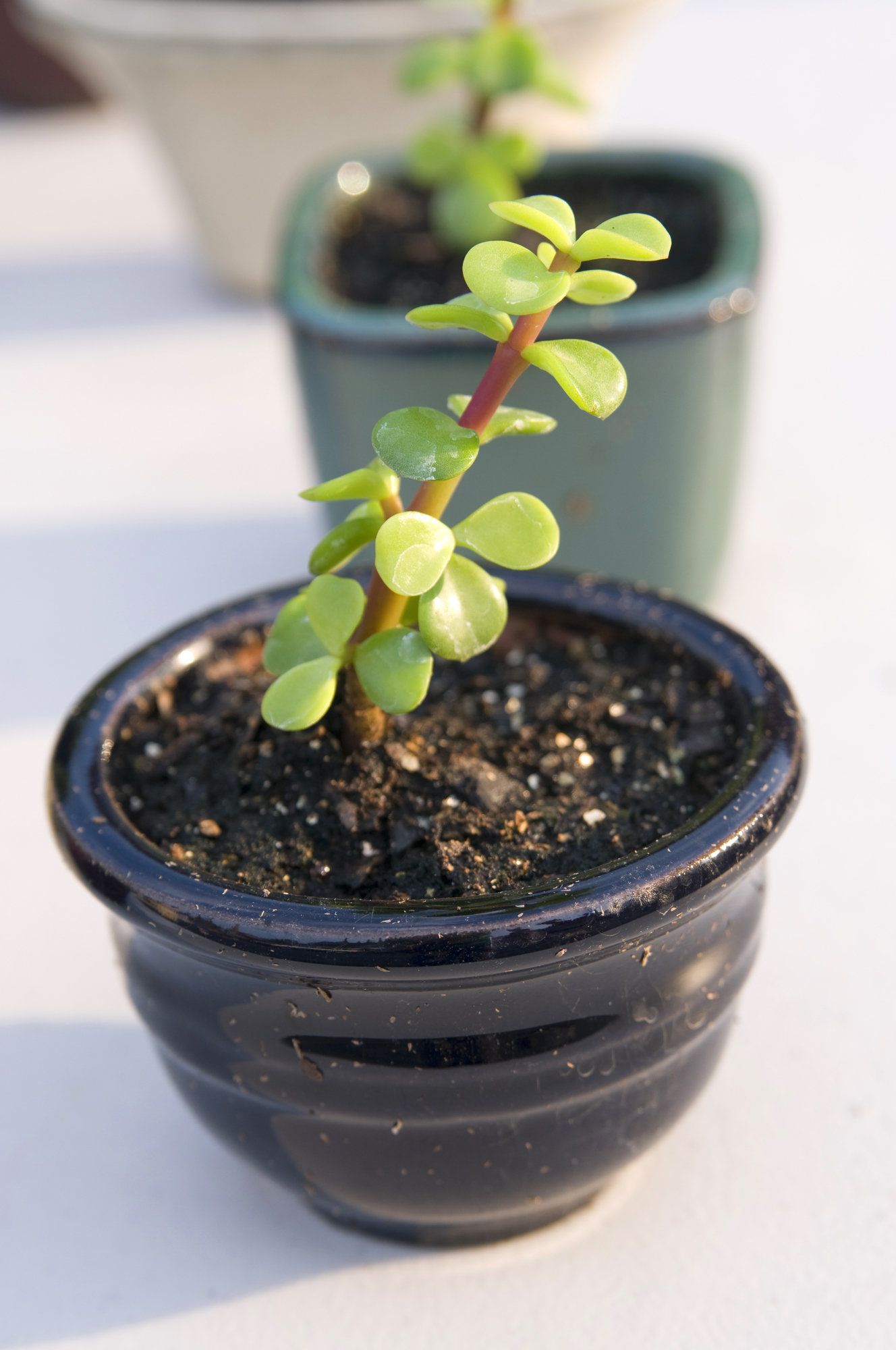
Jade plants (Crassula ovata) really look like miniature trees. They have oval-shaped leaves and thick, woody stems and can reach a height of 3 feet or more indoors. The plants have long lives and are fairly resilient, making them great for first-time plant owners. The leaves of mature plants can also be potted to produce a new jade plant.
To grow a strong, beautiful jade plant, offer it plenty of light.
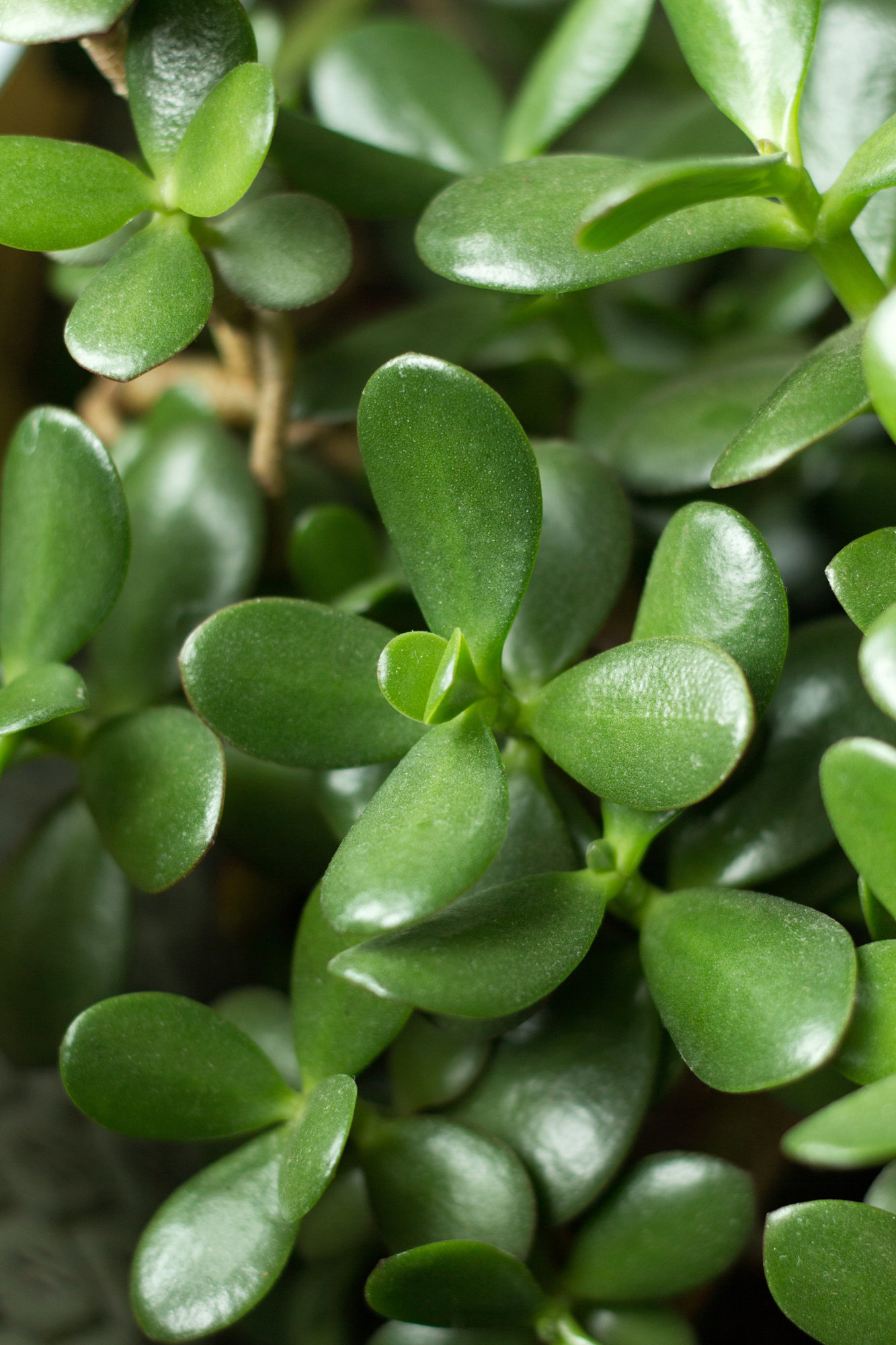
Give jade plants four or more hours of full sunlight a day. It’s best to place these by south-facing windows. The soil of a jade plant should be kept moist regularly, but never too wet as overwatering can lead to plant death. In the best conditions, the jade plant will bloom attractive white flowers.
The clear gel inside an aloe vera plant can be used medicinally.
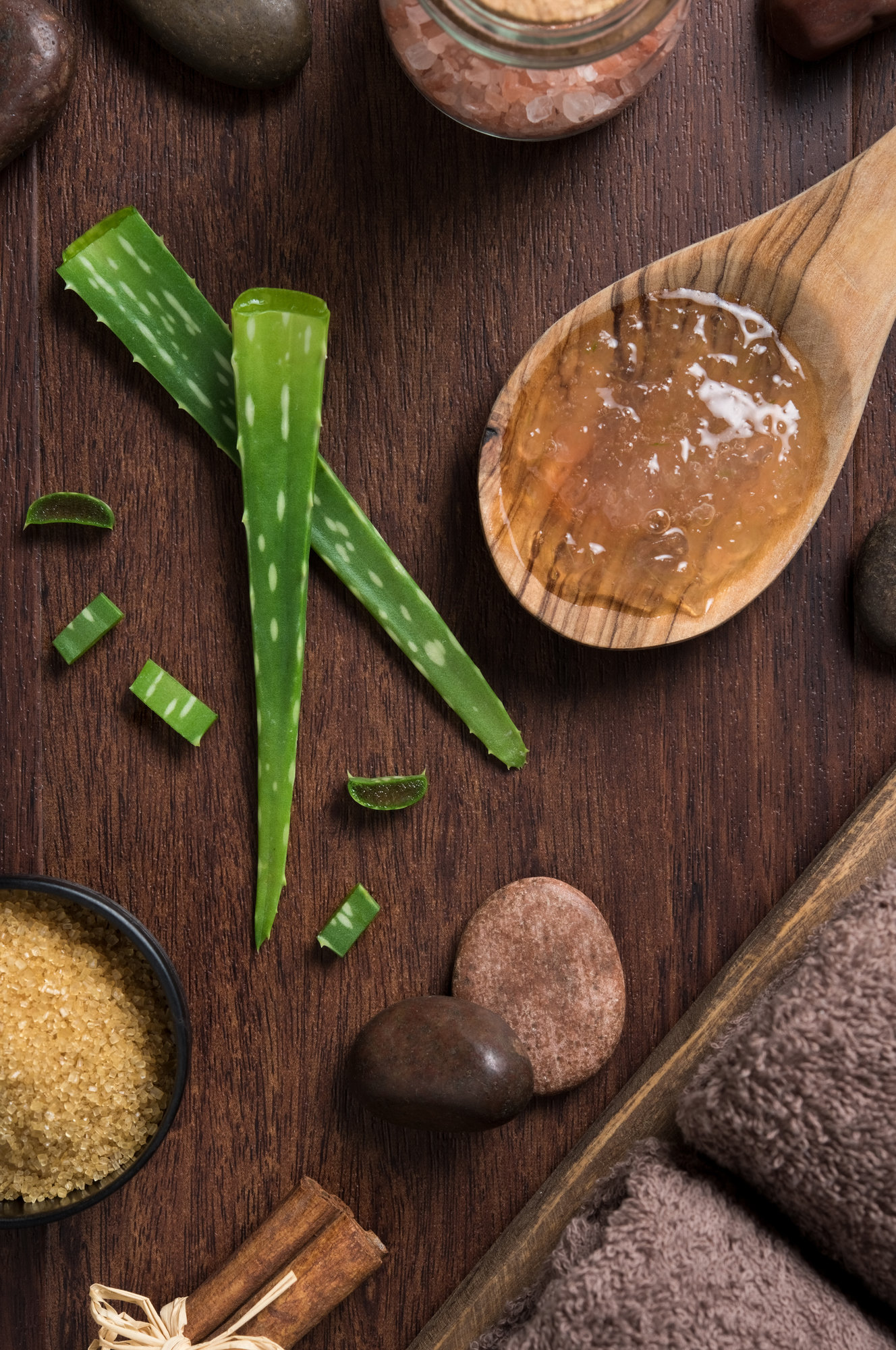
The gel inside aloe vera has a ton of uses that include reducing the healing time of first and second-degree burns, reducing acne and redness, and serving as great beauty products, like hair conditioner and makeup remover. Aloe vera has thick leaves that grow out from the plant’s center. These leaves can be scooped out to get the aloe gel.
Disclaimer: The advice on MamasLatinas.com is not a substitute for consultation with a medical professional or treatment for a specific condition. You should not use this information to diagnose or treat a health problem without consulting a qualified professional. Please contact your health care provider with questions and concerns.
Aloe vera doesn’t need lots of space to thrive, making it an ideal indoor plant.
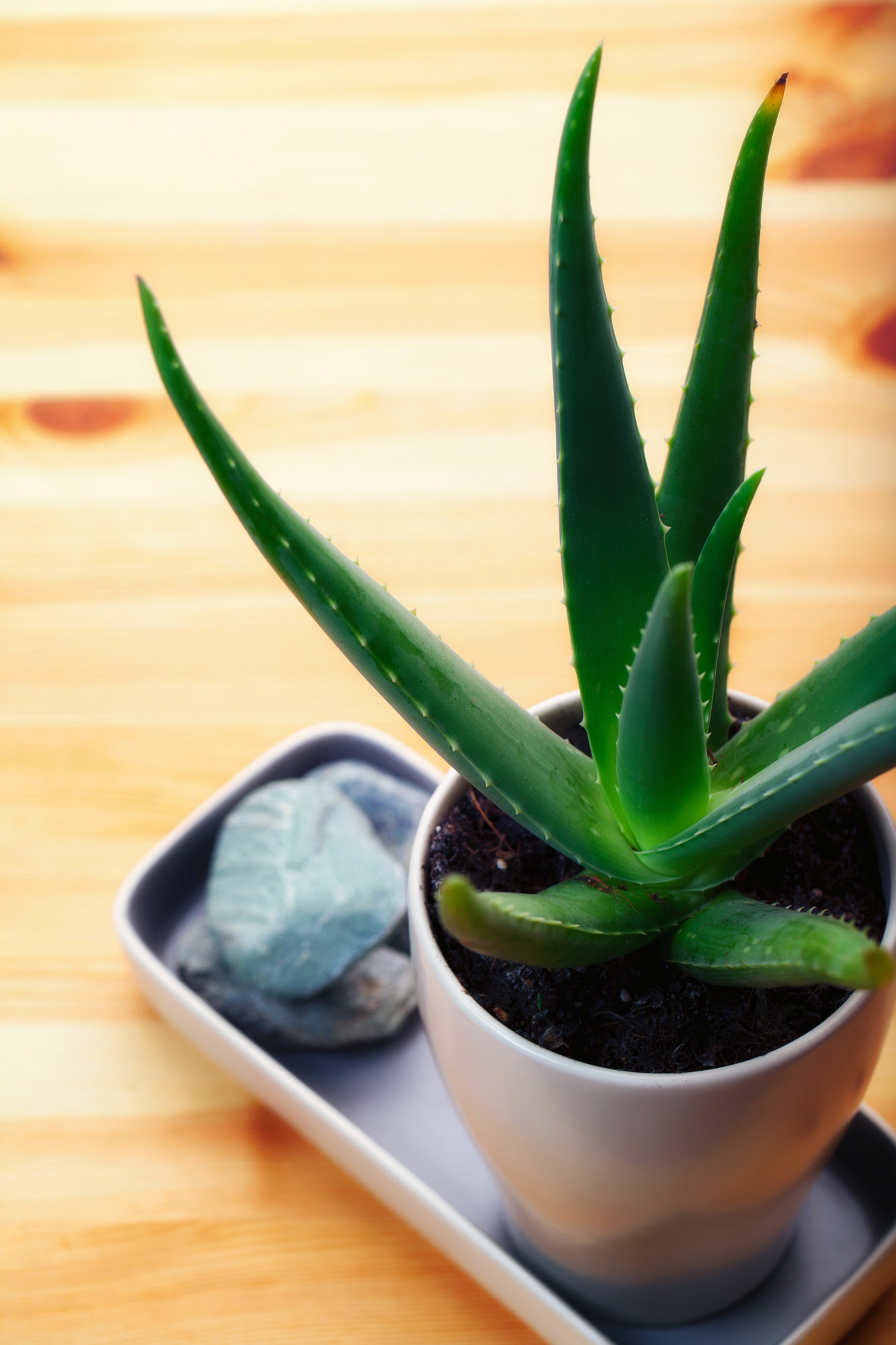
Although it doesn’t need much space, the plant needs lots of light or its leaves will droop. It’s best near a window, but too much direct sun will cause its leaves to get burn marks. The plant also does best in well-drained soil and the soil should completely dry out between waterings. Indoors, the plant can go a month or two months between watering sessions, making aloe a great option for those who are forgetful.
English ivy looks great dangling, making it a great addition to any shelf.

If you’re looking to add elegance or sophistication to your home, then decorate with some English ivy (Hedera helix). But if you have small children or pets, it’s not the best choice as it may be poisonous if eaten. In some states, like Oregon it’s also considered an invasive weed and may be illegal, so check your local regulations. The vines of an English ivy climb to almost any surface. You may recognize ivy as the vines that creep up the sides of houses and buildings.
All English ivy really needs is some shade and a little water.
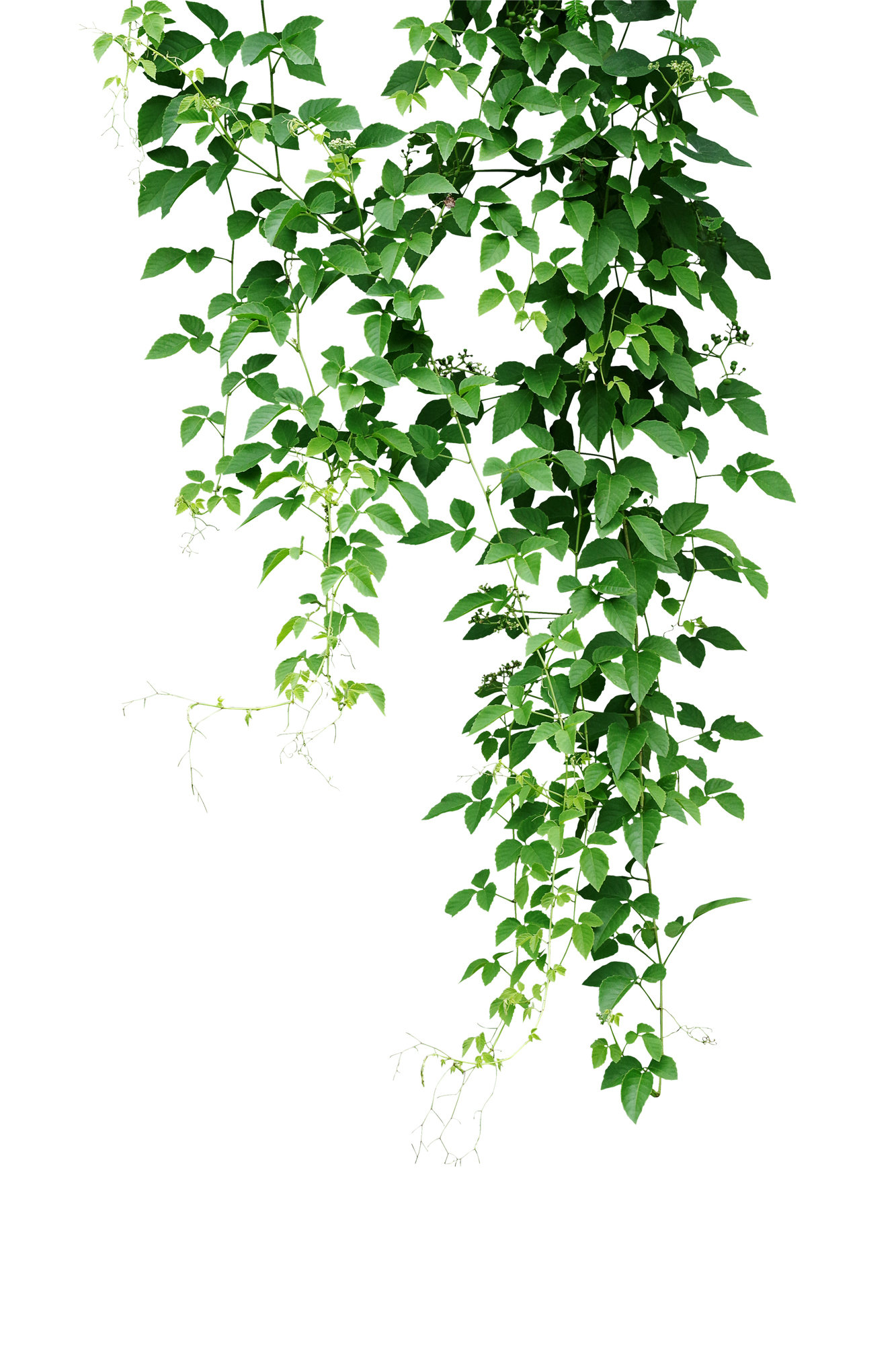
These vines grow at a slow rate in their first year, but by their third year they can quickly take over any surface and can grow more than 50 feet. The plant does best in a shady area and does not need much maintenance. Their soil should be kept regularly moist, but after a while, the plant can tolerate dry conditions.
Peace lilies work as both decorators and 'air purifiers.'
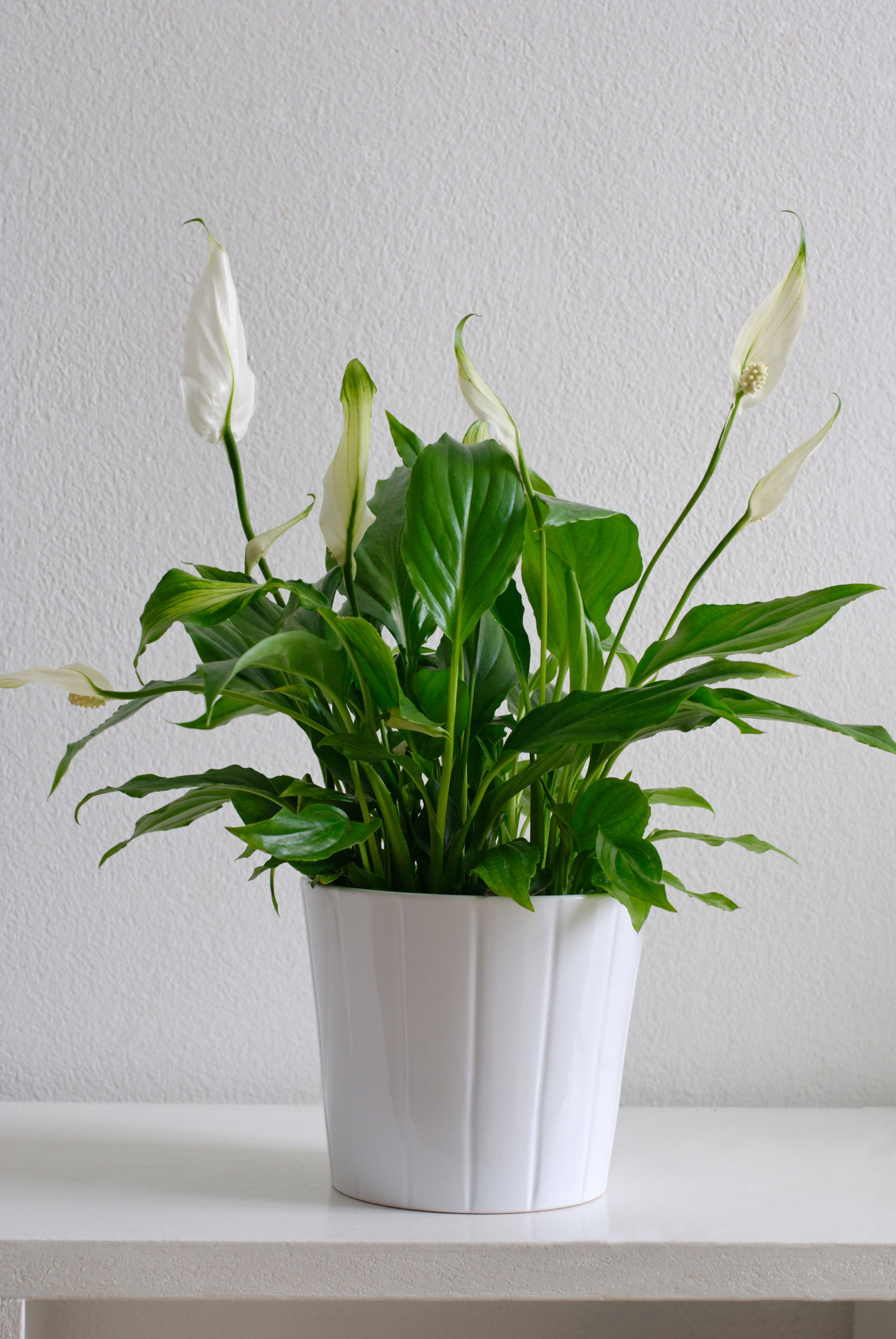
Peace lilies grow green leaves and white flowers. The flowers are covered by hooded, specialized leaves that look like the actual flower themselves. The peace lily may help improve your home's air quality. It should be kept away from children and pets since they may contain a substance that can cause stomach and respiratory irritation if eaten.
Peace lilies thrive best in medium to low light.

Peace lilies that are placed in low light will bloom less and look like traditional foliage, while those in more light are more likely to bloom flowers. Since they are drought-tolerant, a good tip is to wait until the soil is dry or the plant is drooping before watering it. This will ensure you don’t overwater that plant, as overwatering can result in plant death.
Areca palms serve as great tropical décor to any bright environment.
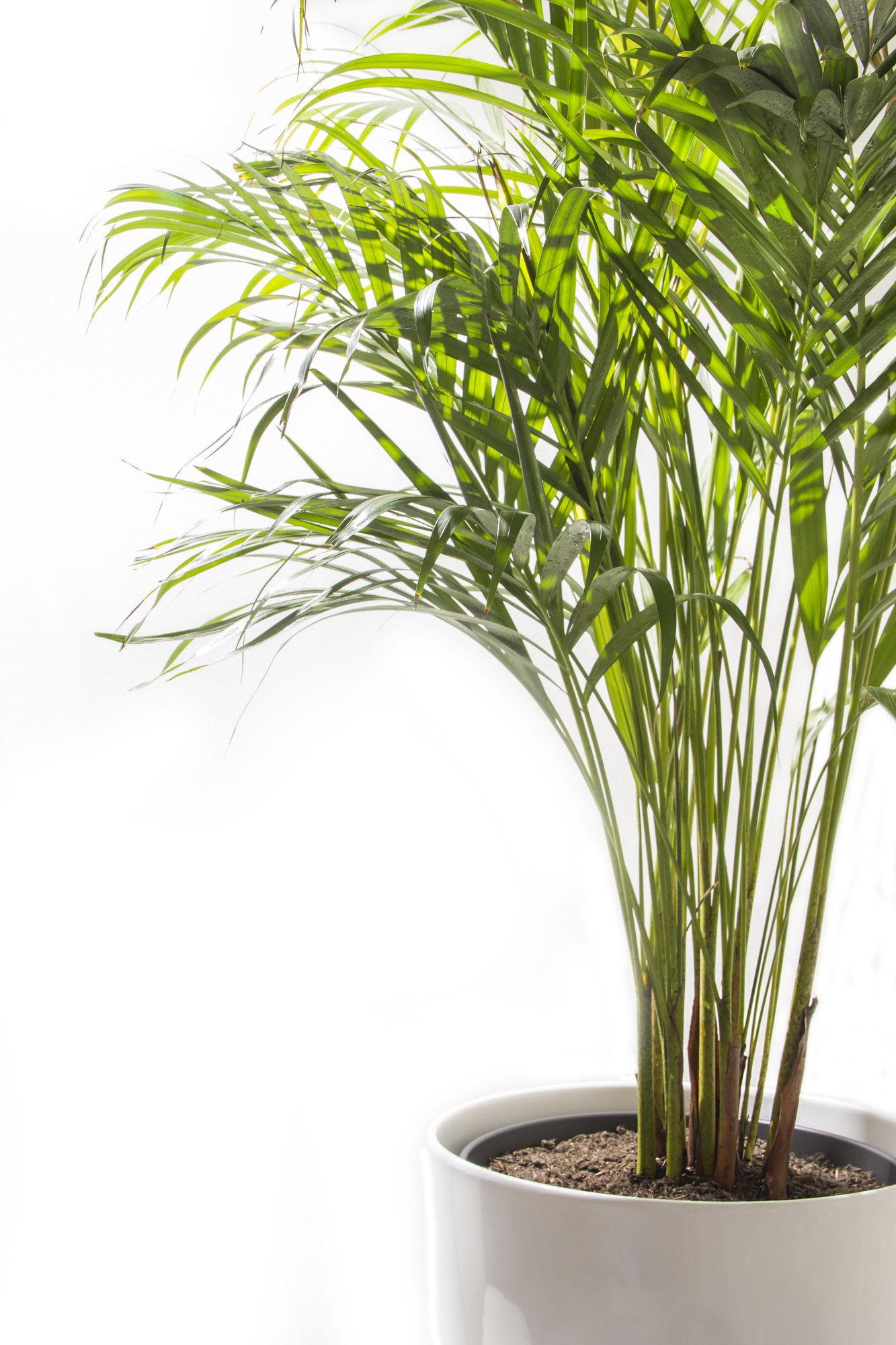
Areca palms (Dypsis lutescens) are made up of smooth trunks and arching fronds, with up to 100 leaflets each. Because mature plants can be expensive, they can usually be purchased as small, tabletop plants. Areca palms can grow up to 6 or 7 feet, but tolerate trimming, making it possible to keep one in your home for its entire lifespan. Though, because they need fairly bright light, they’re often short-lived houseplants.
The areca palm requires bright light, but too much direct sunlight can burn the leaves.
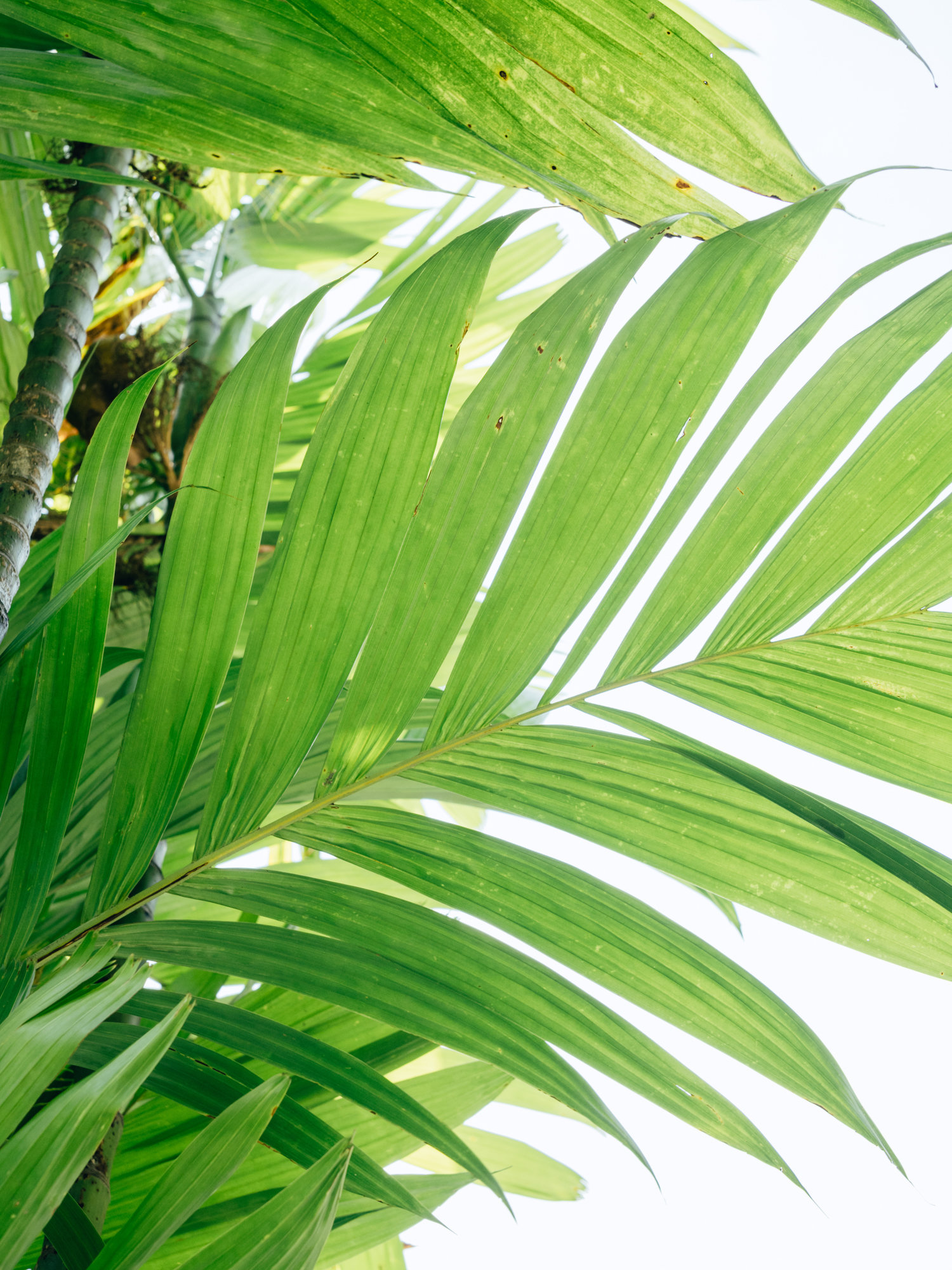
These plants do best in locations where winter temperatures stay above freezing. Sudden drops in temperature or cold drafts can brown the leaves. They should be planted in pots with drainage holes and the soil should be allowed to dry before it’s watered. Areca palms are slow growers and should only be repotted once every two to three years.
Even 'black thumbs' will find success with a philodendron.
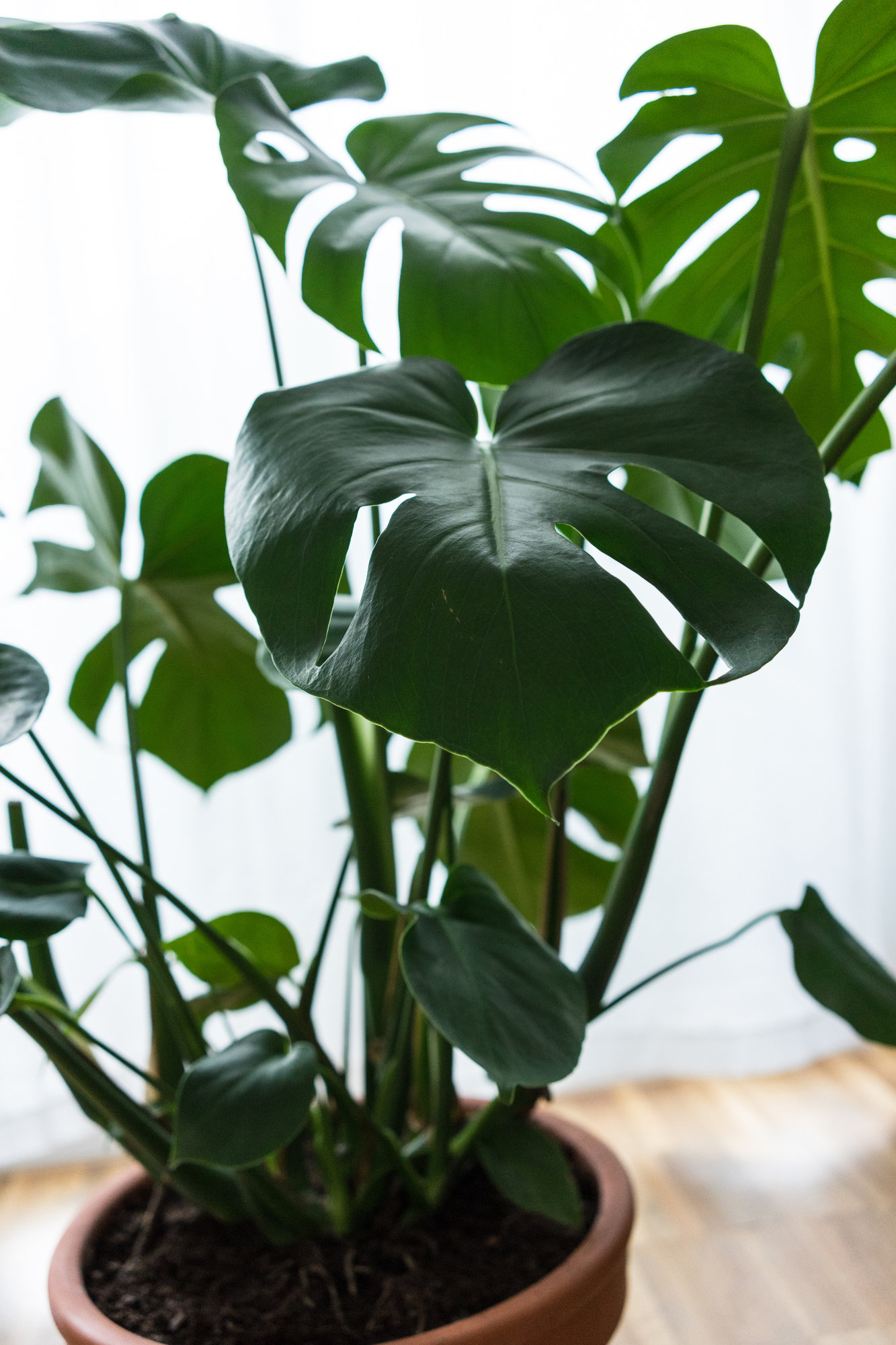
Philodendrons are climbing plants that are native to tropical rain forests. There are several varieties of philodendron including "elephant ear," "fiddle-leaf," and "Brasil" and their leaves are usually a deep green color. Some varieties have different colors—like the red-leaf philodendron which has red coppery leaves. Because this plant requires little attention, it can survive even when left alone for long periods.
For a healthy philodendron, water, sunlight, and fertilizer is enough.
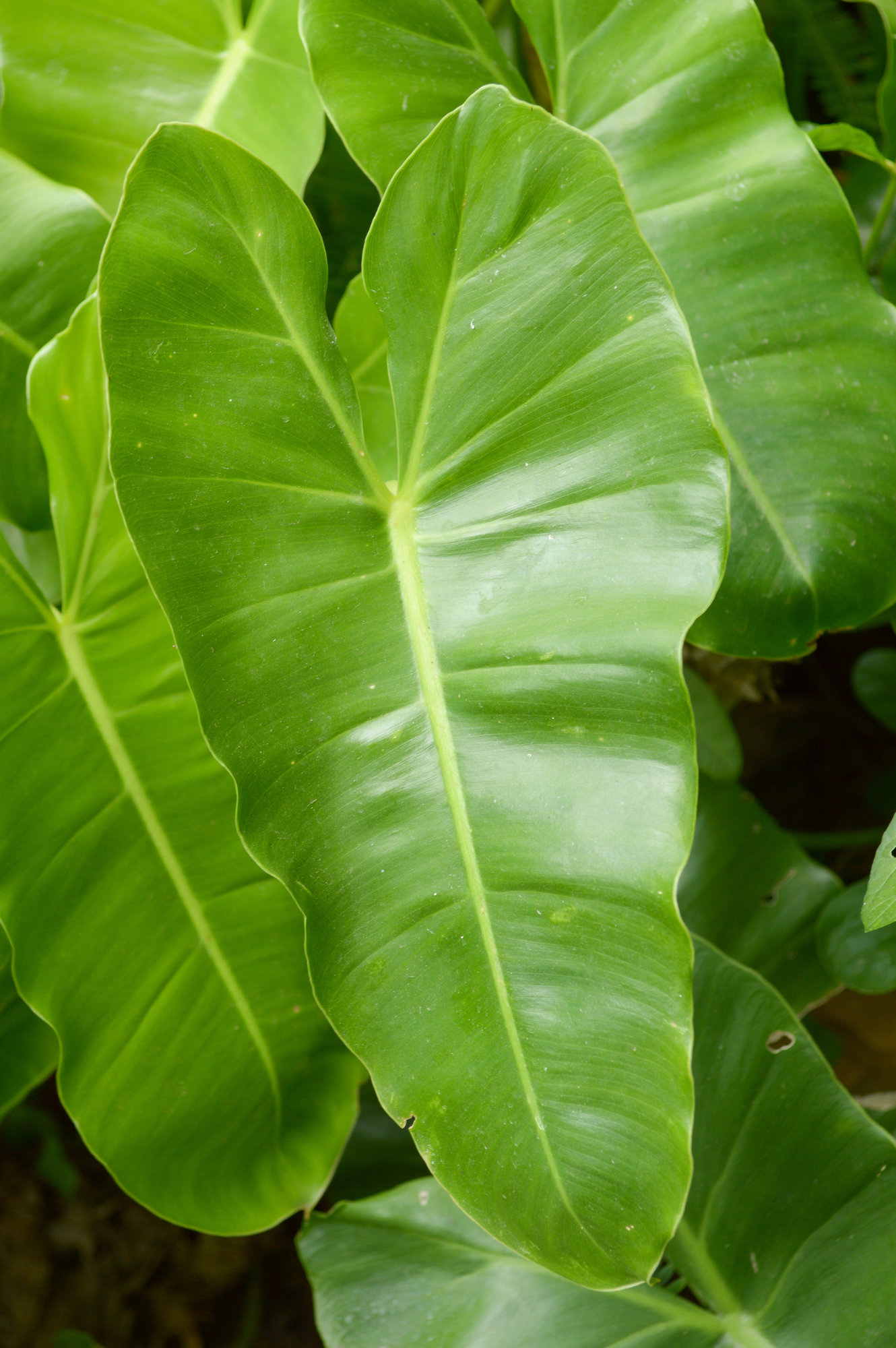
Philodendron houseplants need bright, indirect sunlight. If several leaves begin to yellow at the same time, it may mean the plant is getting too much sunlight, but too little light can also be harmful. There are two types of philodendron: the vining and non-climbing type. The vining type will need a post or structure to climb on, while the non-climbing type will need space to spread.
Add a pop of color to your home with some African violets.
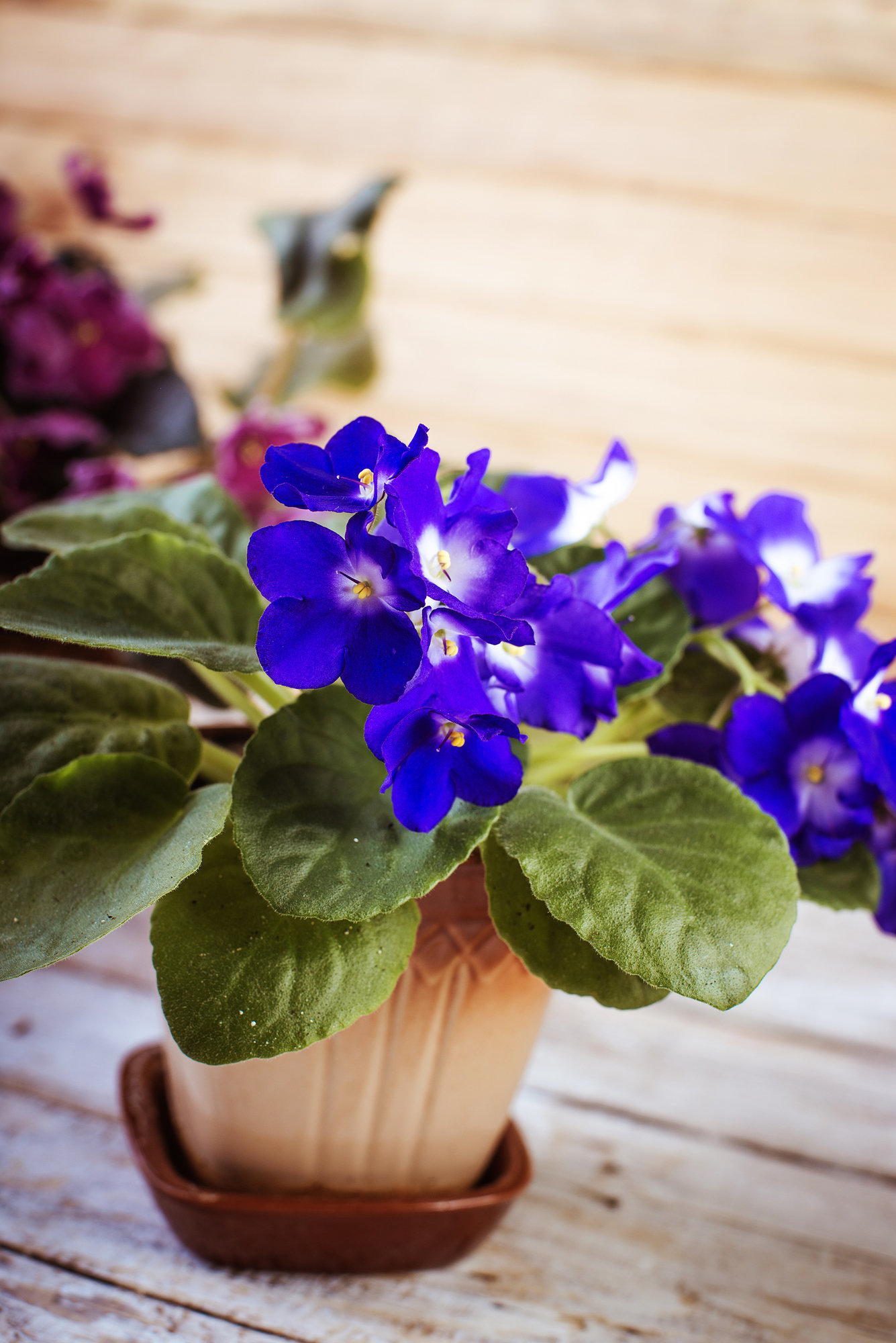
Tended to correctly, African violets (Saintpaulia ionantha) will produces blooms of purple, blue, and white over fuzzy leaves. The tough plants are native to Tanzania. They make great indoor plants, but their leaves need to stay dry for best plant health. These plants are long-lived and can yield more plants from cuttings if properly cared for.
African violets are simple to care for once you’ve settled on a routine.
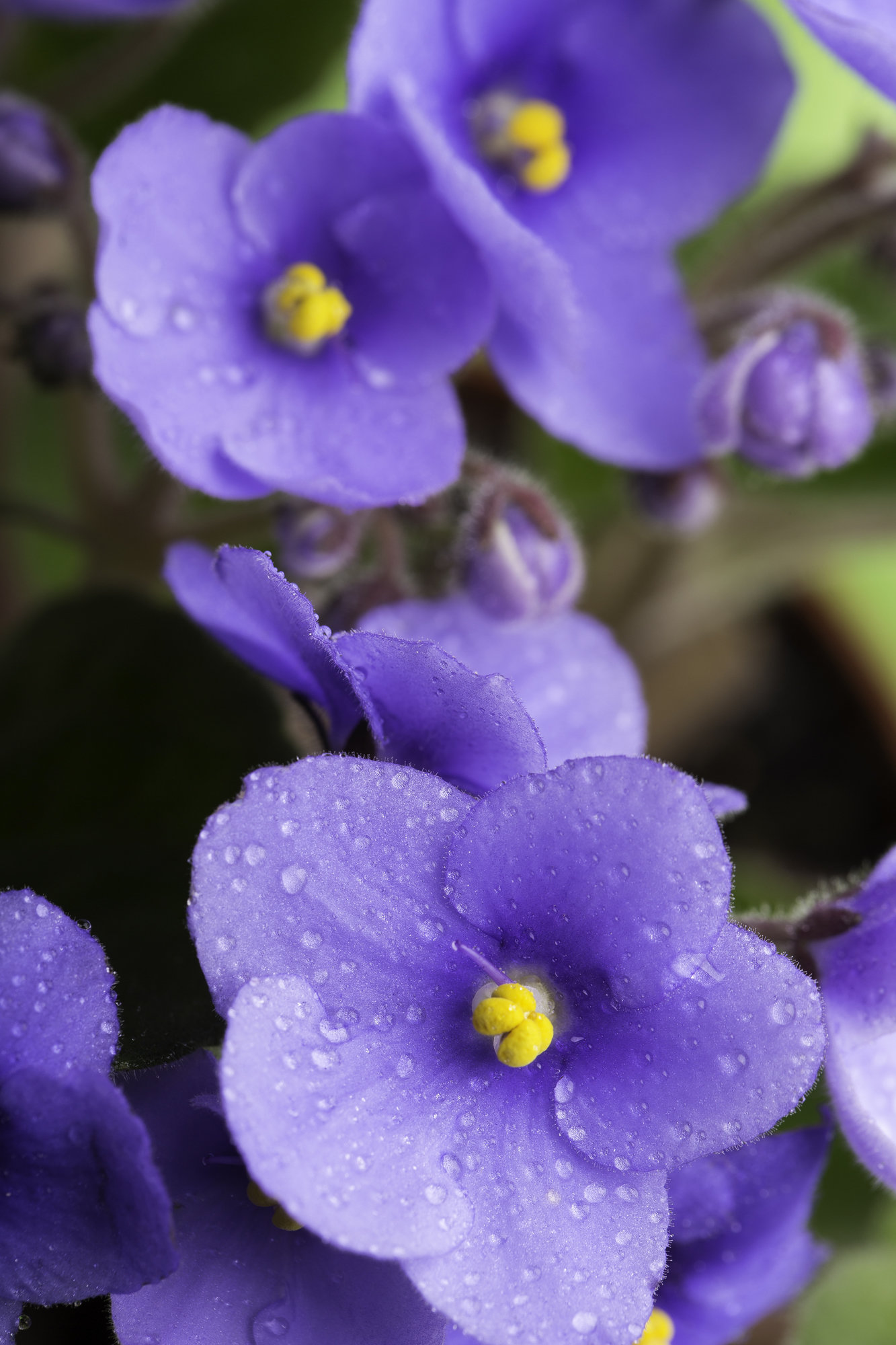
An ideal location for an African violet is on east- or south-facing windowsills. In direct sunlight, the furry leaves might burn. The plant also benefits from good humidity and porous potting soil that has both peat moss and perlite. The soil should never be too soggy or too dry, but watered enough to keep the plant always moist. Care for the plant and you’ll be rewarded with beautiful flowers.
What’s commonly known as a ficus tree is technically a 'weeping fig.'
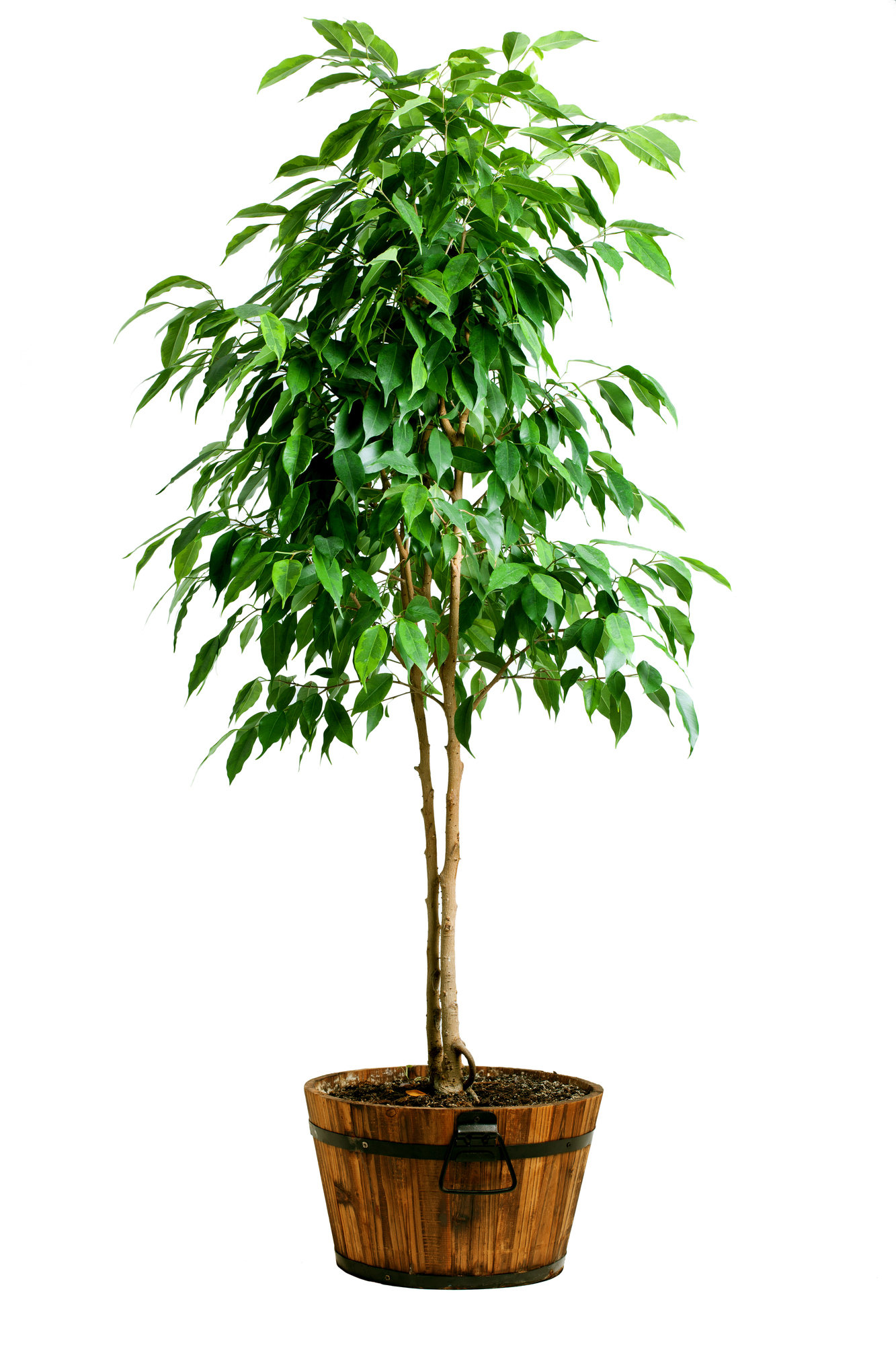
Ficus plants often look like miniature trees. They have a single trunk and a spreading canopy. The weeping fig is one type of a ficus plant, but the Ficus genus of plants also includes fig fruit trees and rubber trees. Their leaves are dark green and some cultivators at nurseries have braided or twisted their trunks into different forms.
Though common houseplants, ficus trees do require a little extra TLC to keep them healthy.
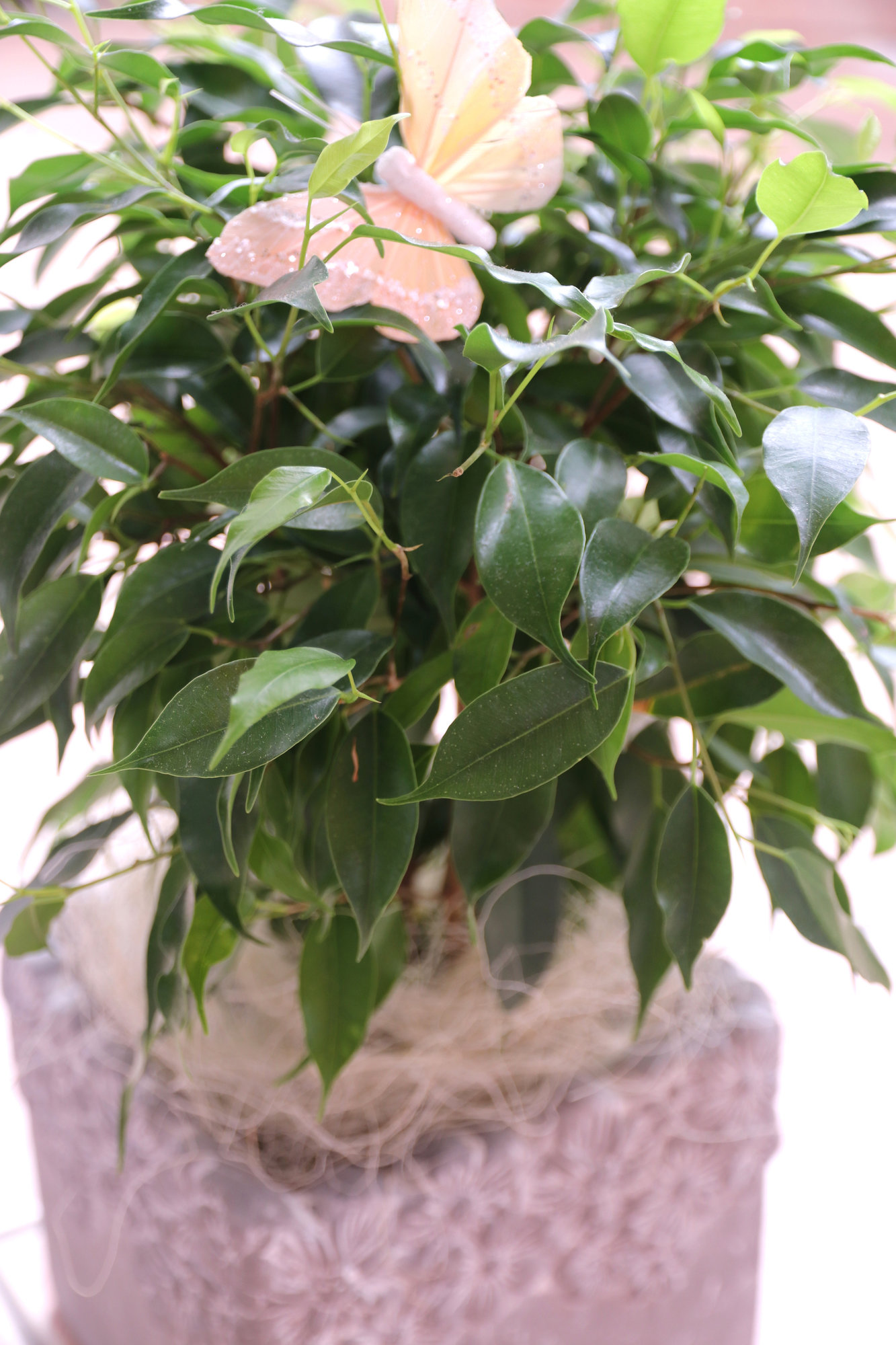
This plant likes a high humidity environment so regularly misting the tree is a good idea. It can also be placed on a pebble tray filled with water, but don’t keep the roots overly wet. The trees grow best in filtered or indirect sunlight and cannot tolerate low temperatures or drafts. These conditions can result in leaf loss. Leaf loss is the ficus tree’s natural reaction to stress.
Due to its bold markings, the Calathea is often nicknamed a 'zebra plant,' 'rattlesnake plant,' or 'peacock plant.'
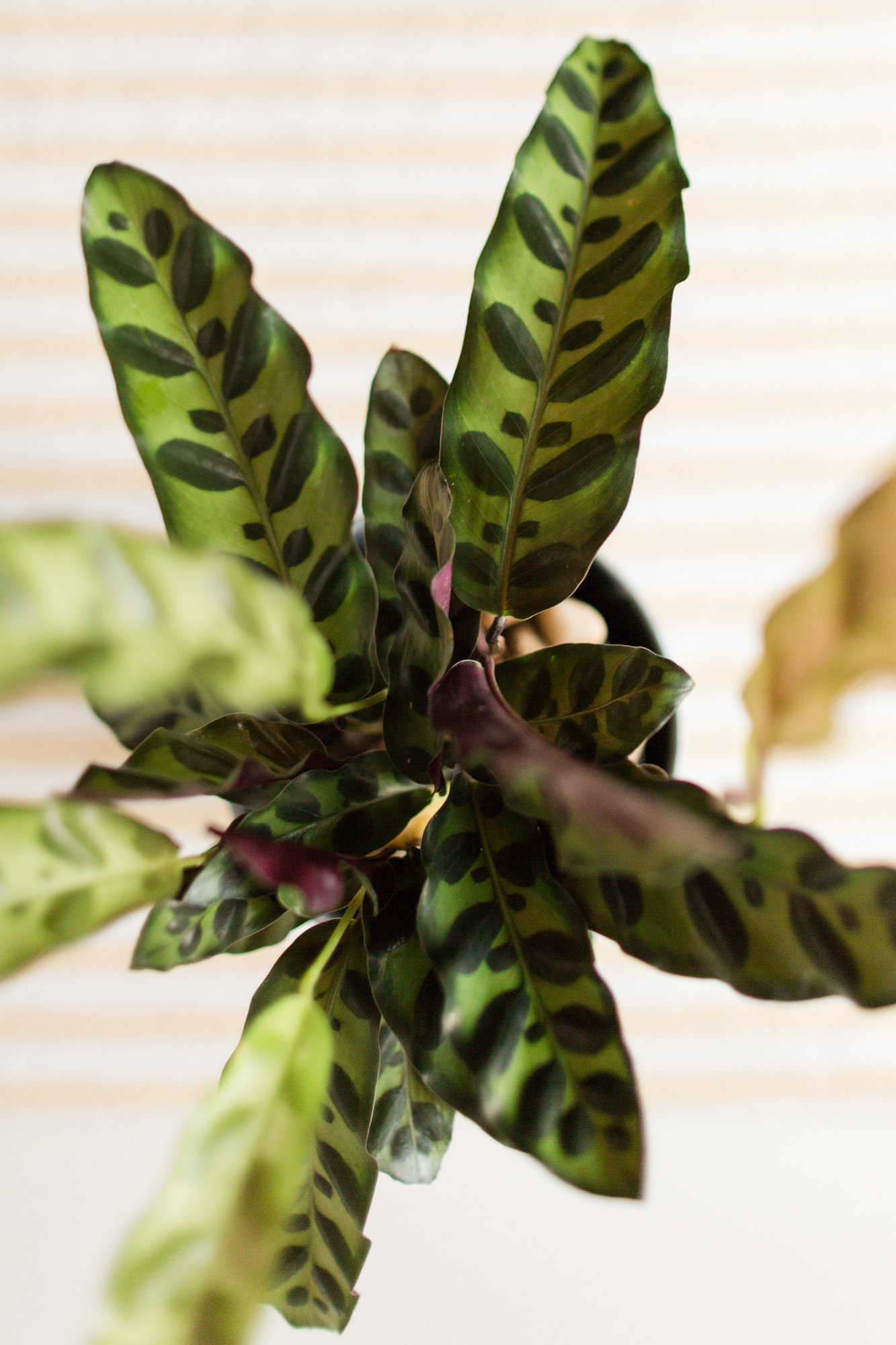
A tropical plant, the Calathea family is native to eastern Brazil. These plants usually have striking leaves that are oblong-shaped and marked in several colors ranging from shades of green to purples. The plants can also bloom small flowers in clusters. The leaves change their spread and angle according to the direction of the sun.
Calathea are highly sensitive and they need to be kept in specific conditions to produce those large, beautiful leaves.
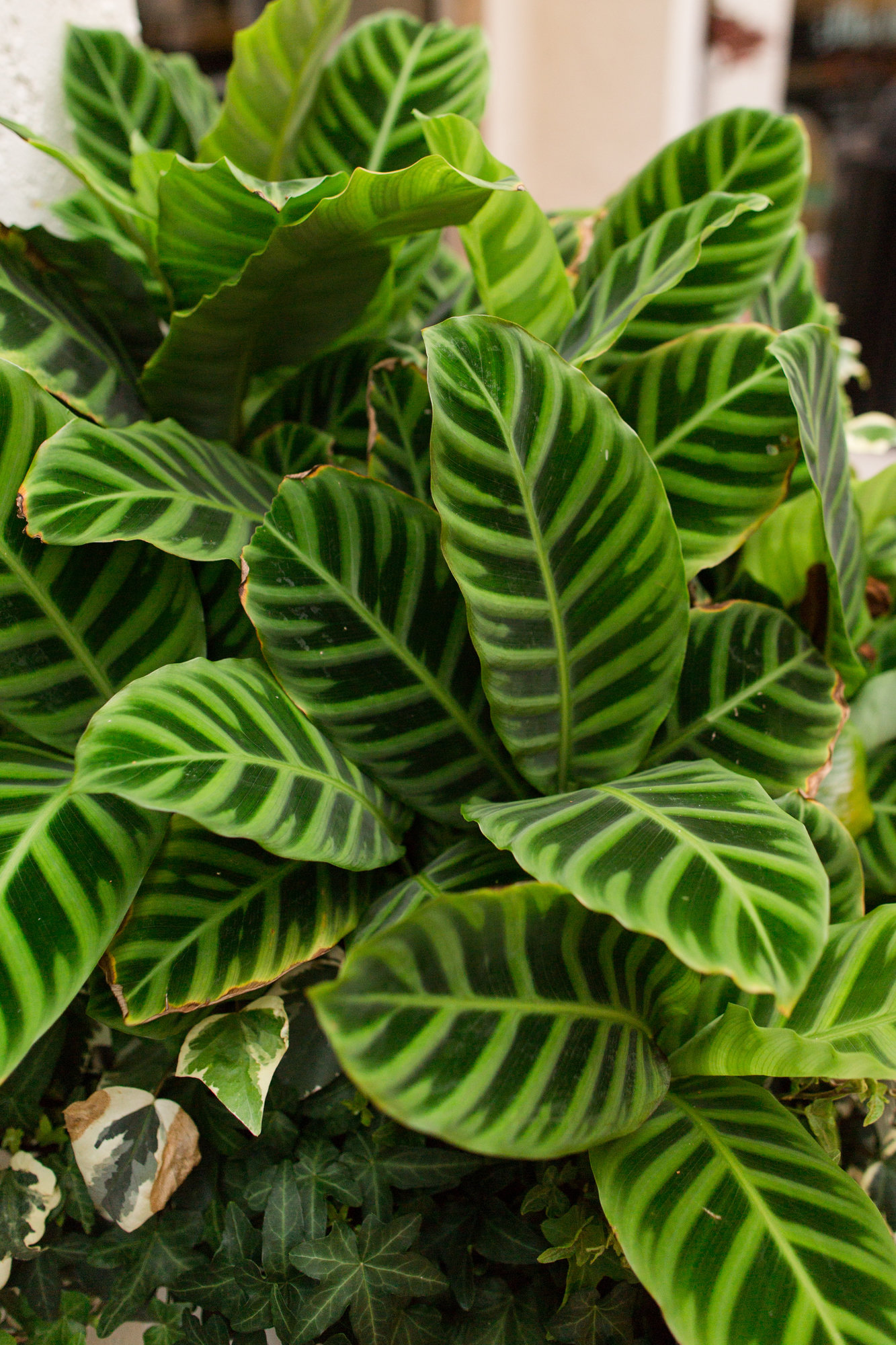
This plant flourishes under dappled light, light shade and warm, humid conditions. A sudden change in temperature might negatively affect Calathea. Its soil should be kept moist, but it’s OK to slow down on a watering schedule in the winter. This plant will do best potted in a porous soil that retains water, but drains well.
Burro’s tail belongs to a group of plants known as succulents.
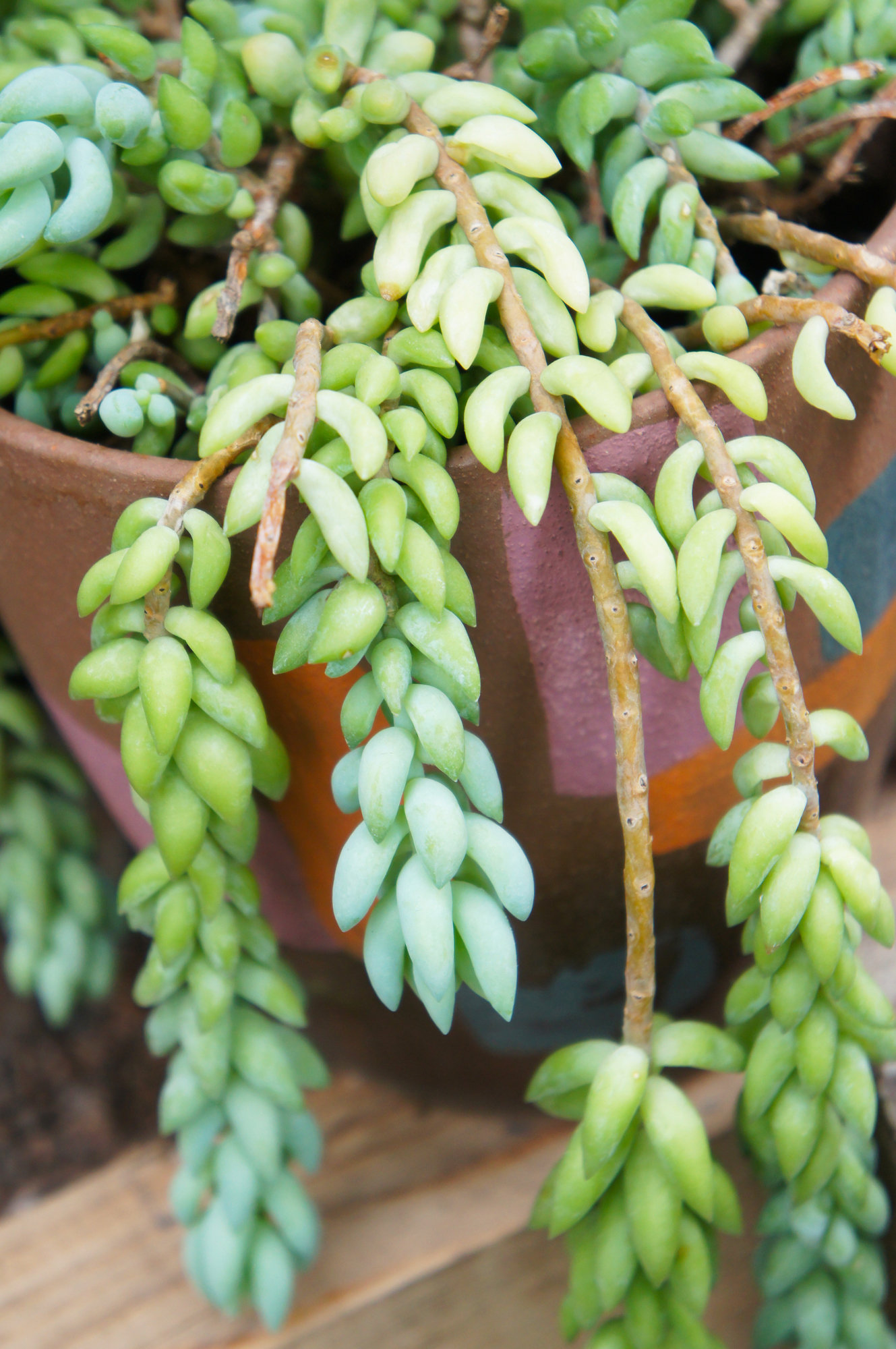
Succulents are plants that have thicker, fleshy parts, which are usually to be able to retain water in dryer soil and conditions. Burro’s tails, a plant featuring thick stems that appear woven or braided, are heat- and drought-tolerant plants. The plant is usually some shade of green, like gray green or blue green and may sometimes appear chalky.
A burro’s tail looks best as a hanging plant, as its branches can grow up to 2 feet long.
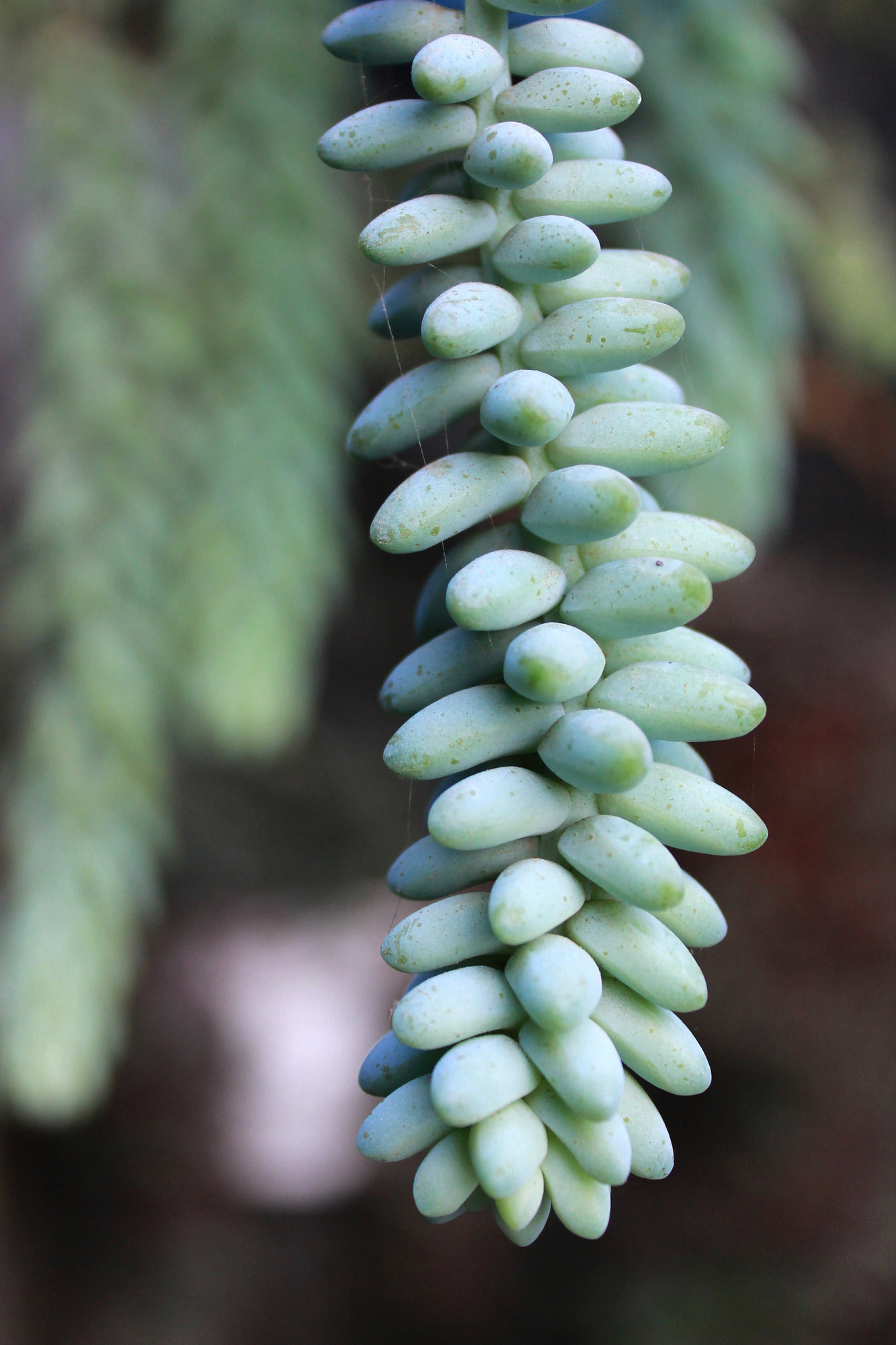
During the summer, clusters of small red, yellow, or white flowers may emerge from the plant. A burro’s tail needs direct sunlight and weekly watering, so placing it on a sunny windowsill is probably a good idea. The plant should also be housed in a pot with proper drainage, as the roots can rot if they’re too wet. Though these plants prefer a warmer climate, they can survive a winter that doesn’t go below freezing.
A fiddle-leaf fig is perfect décor for a room with light, or neutral furnishings.

A fiddle-leaf fig plant has tall stems, with large, waxy violin-shaped leaves. Fiddle-leaf figs have gained a reputation in home décor as the go-to houseplant. It’s the huge plant you’ve probably seen in interior design magazines. These plants are native to the tropical African jungle and thrive in warm and humid conditions.
The fiddle-leaf fig is used to the warm and humid climate of the rain forest, but can easily adapt to most conditions.

To keep the plant healthy and growing, provide it with bright, consistent light, turning it once it begins to lean toward the light. It’s best to keep the plant away from cold drafts, as these can cause some of its leaves to fall off. Leaf loss can also result from under- or overwatering. A good tip is to wait until the plant’s soil is dry before watering it again.
Despite its name, the ponytail palm is neither a palm nor a tree and is actually a succulent.
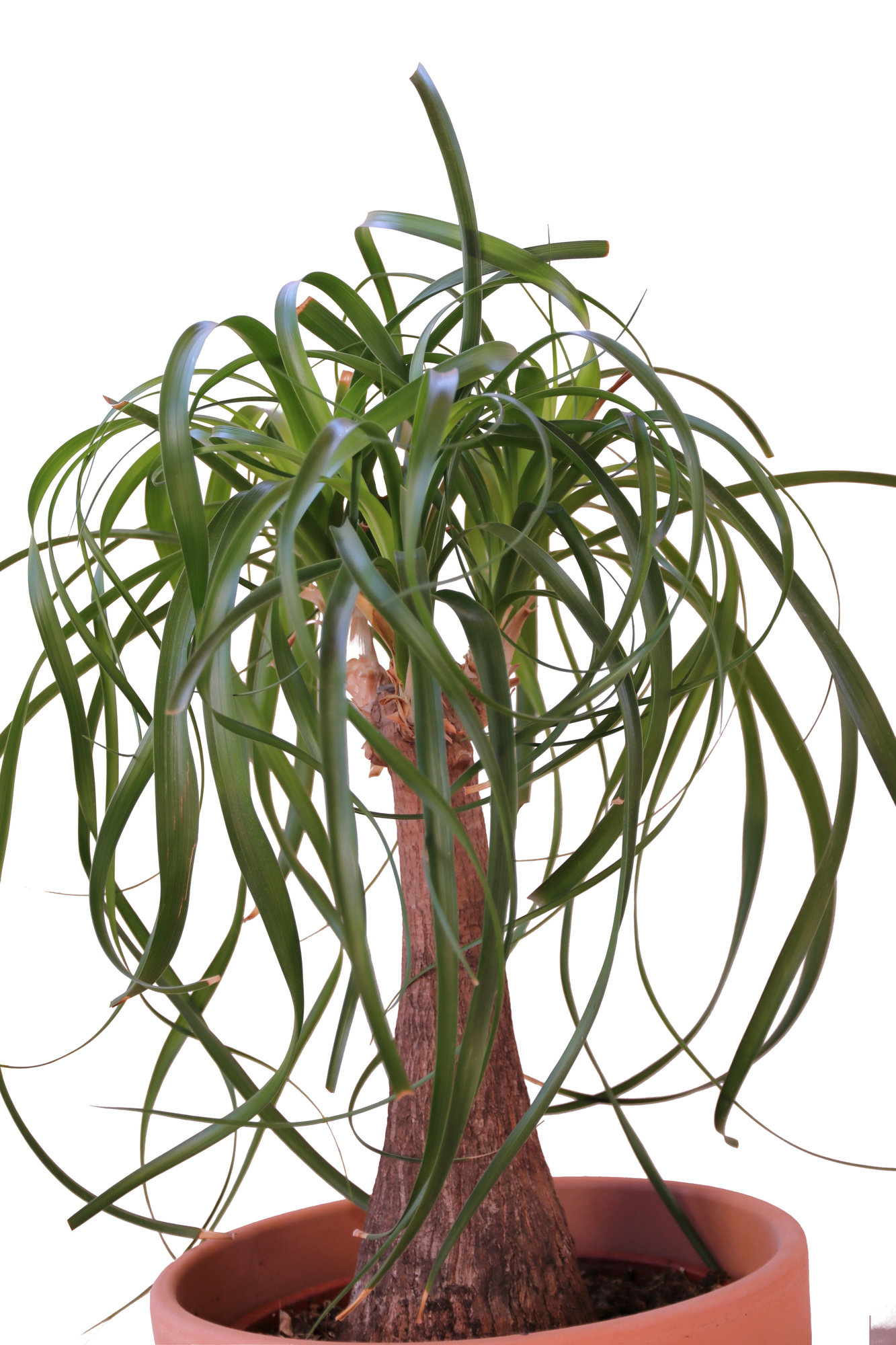
Though it's not actually a palm tree, this plant can still add a tropical feel to your home. The ponytail palm often has a large stump, which it uses to store water, and long, thin leaves that grow from the top of the trunk and fall like a ponytail. The ponytail palm is easy to care for and can tolerate a fair amount of neglect, making it a good option for those who might be forgetful.
As a succulent, the ponytail palm grows best in semi-dry conditions.
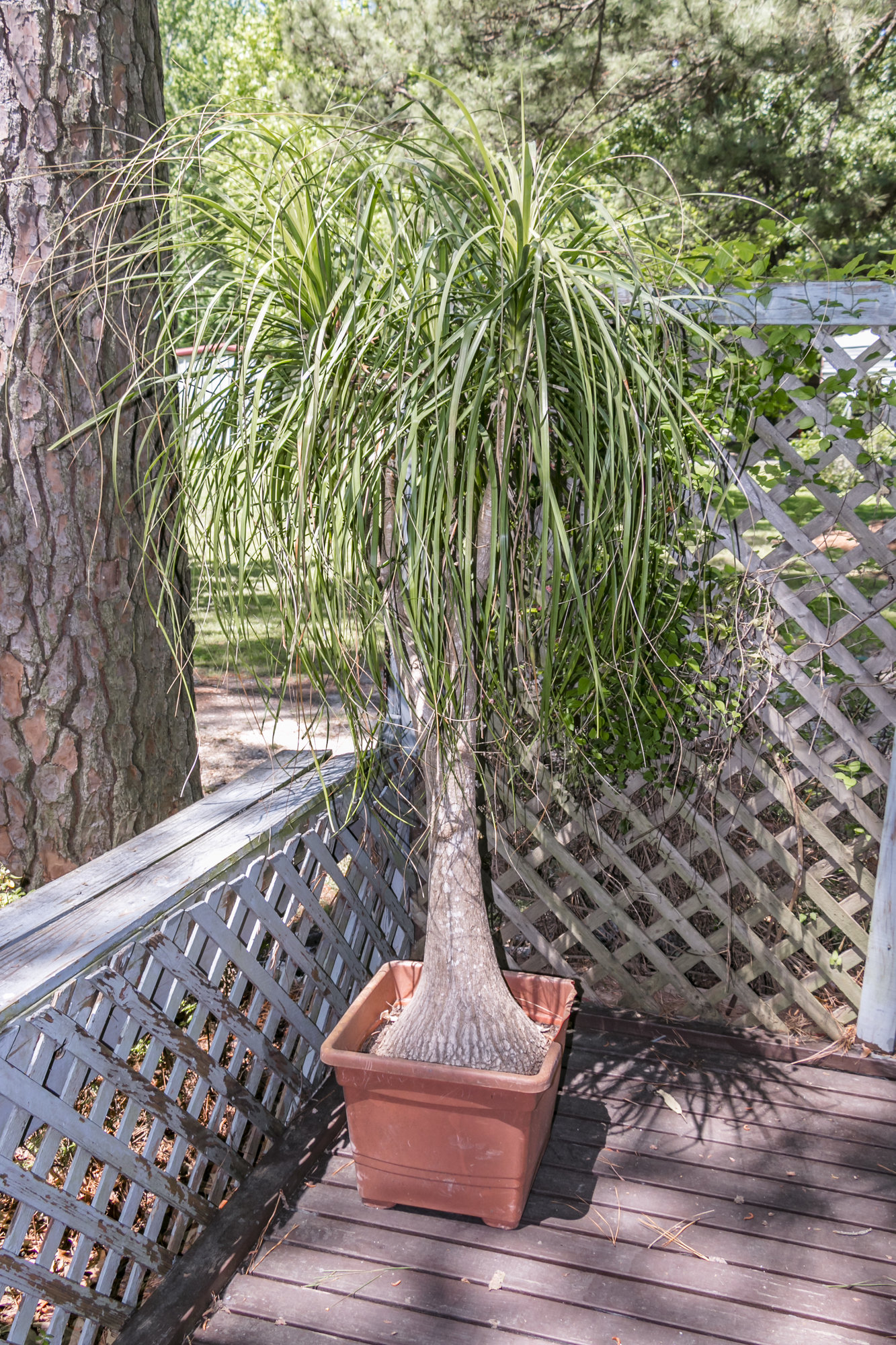
The ponytail palm prefers bright light, but will be fine if it only gets it about half of the year, as the plant can tolerate indoor light conditions the other half. Just make sure it gets lots of sun during the summer. Its soil should be allowed to dry out between waterings and it should be fertilized no more than two to three times per year.
The crown of thorns, also referred to as Christ thorn, is native to Madagascar.
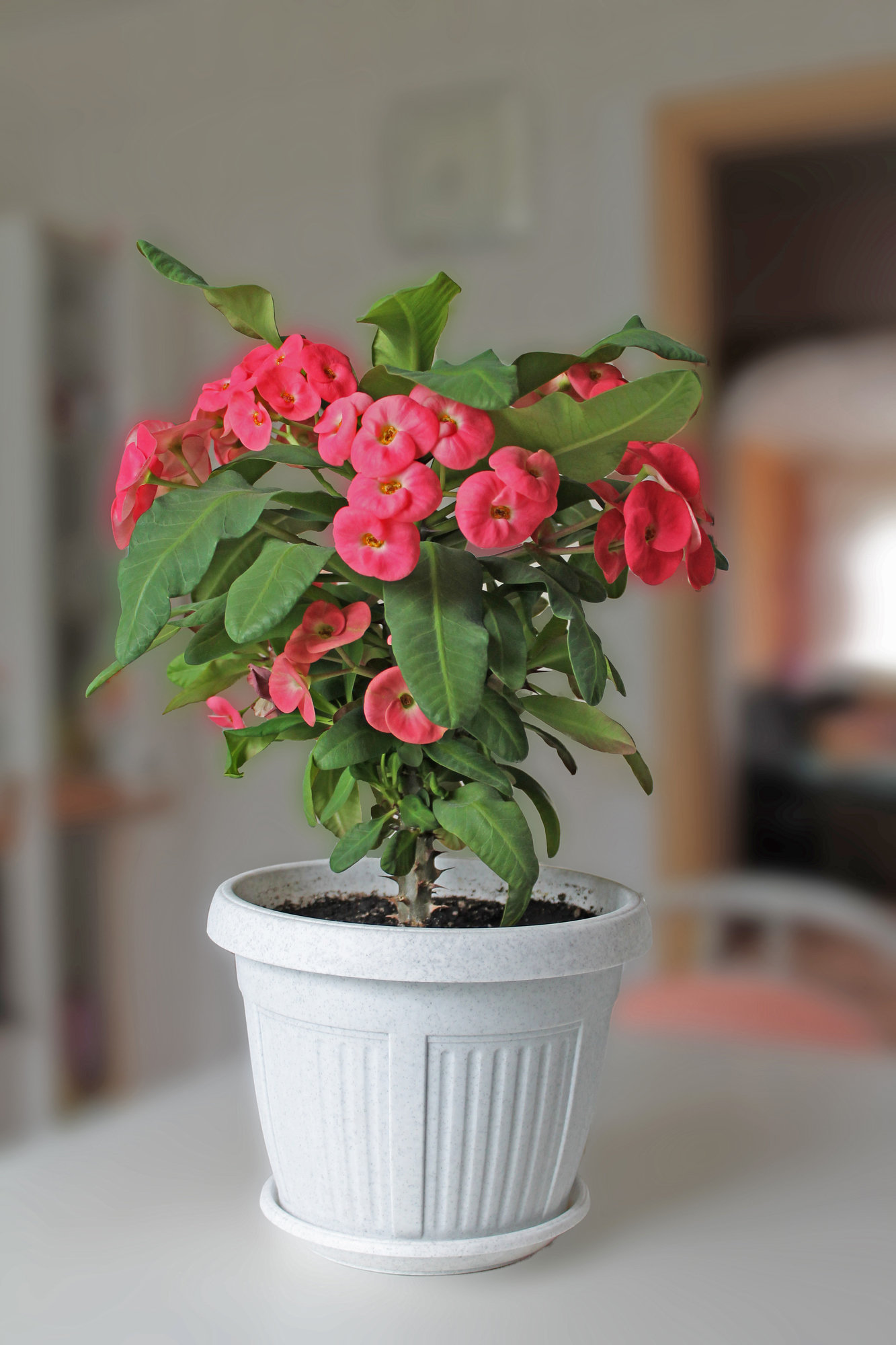
The name of the plant refers to the thorny crown Jesus wore during his crucifixion, with the red flowers said to represent his blood. In Thailand, it’s believed that the number of flowers on the plant, foretells the luck of its owner. You’ll notice the plant because of its stout gray thorns, oval leaves along vine-like stems and small flowers paired in clusters surrounded by two light red brackets.
Crown of thorns grow fine in the conditions inside most homes.
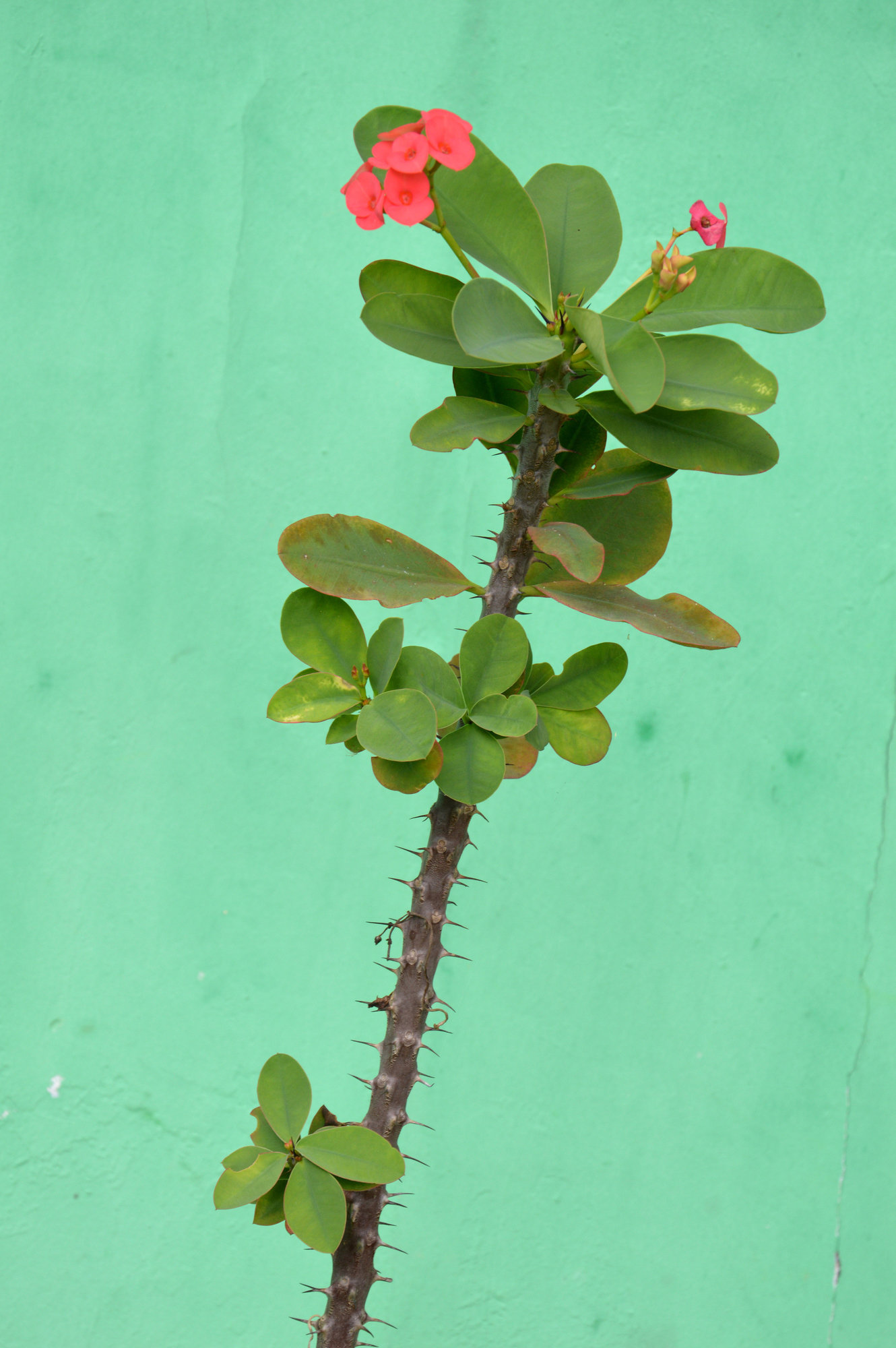
Crown of thorns (Euphorbia milii) should receive about three to four hours of direct sunlight a day and they can get this from sitting on a sunny windowsill. It may not be the best plant for those who experience cold winters, as the plant can only withstand temperatures as low as 50 degrees Fahrenheit. But if you choose to go with a crown of thorns, water this plant by flooding it with water, but ensure proper drainage and that the roots aren’t left sitting in water.
Bromeliads add color and exotic flair to any home.
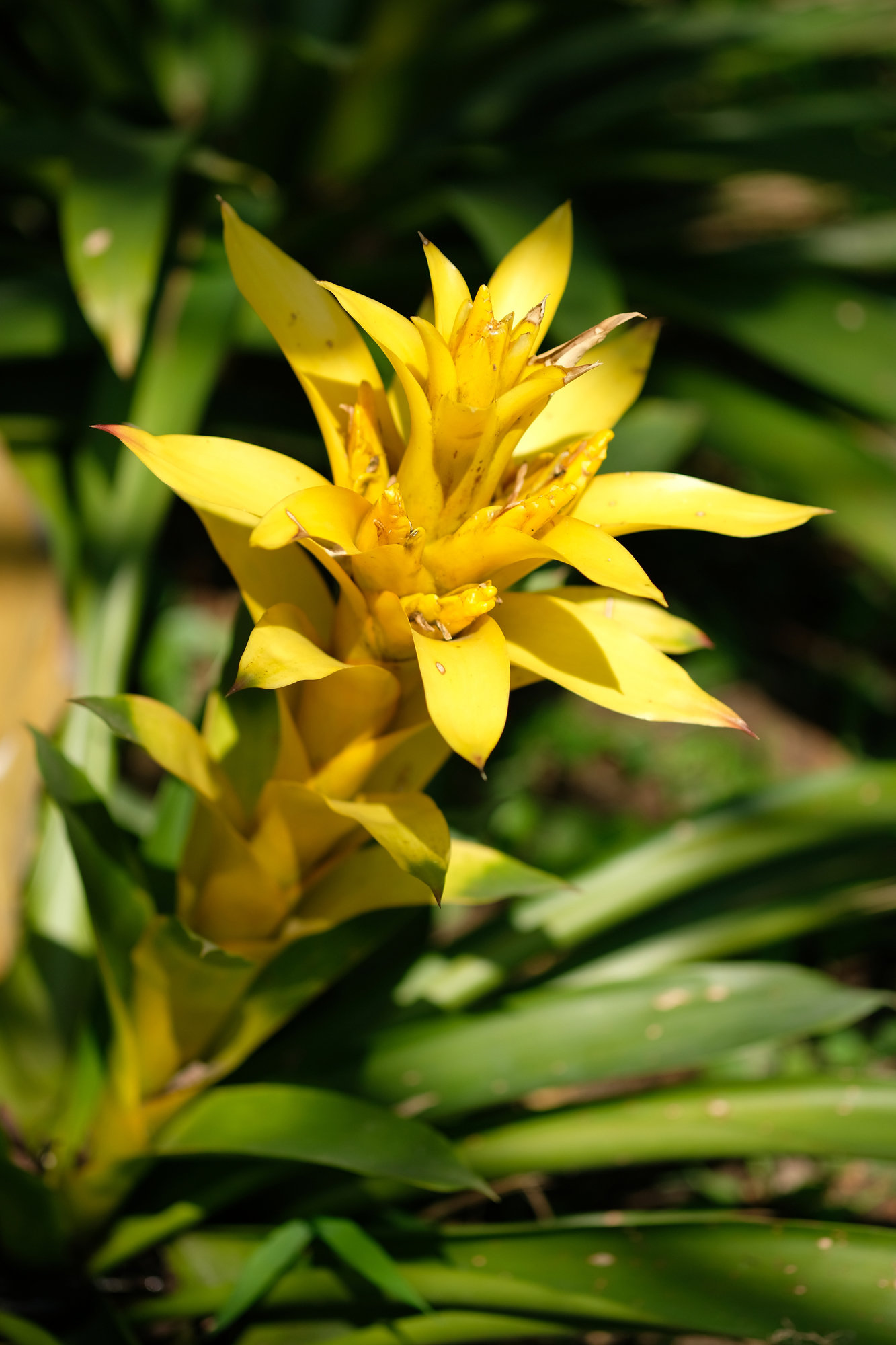
Bromeliads are a family of plants that include pineapples and Spanish moss, though you probably won’t be growing those in your home. Common bromeliads suitable for your house include ones like Aechmea and Neoregelia, which grow in rosettes of large leaves along a central cup. Bromeliads don’t get their nutrients from their roots, but rather from the air, rainwater, or debris surrounding it.
Bromeliad plants are short-lived and may start to die back after flowering.
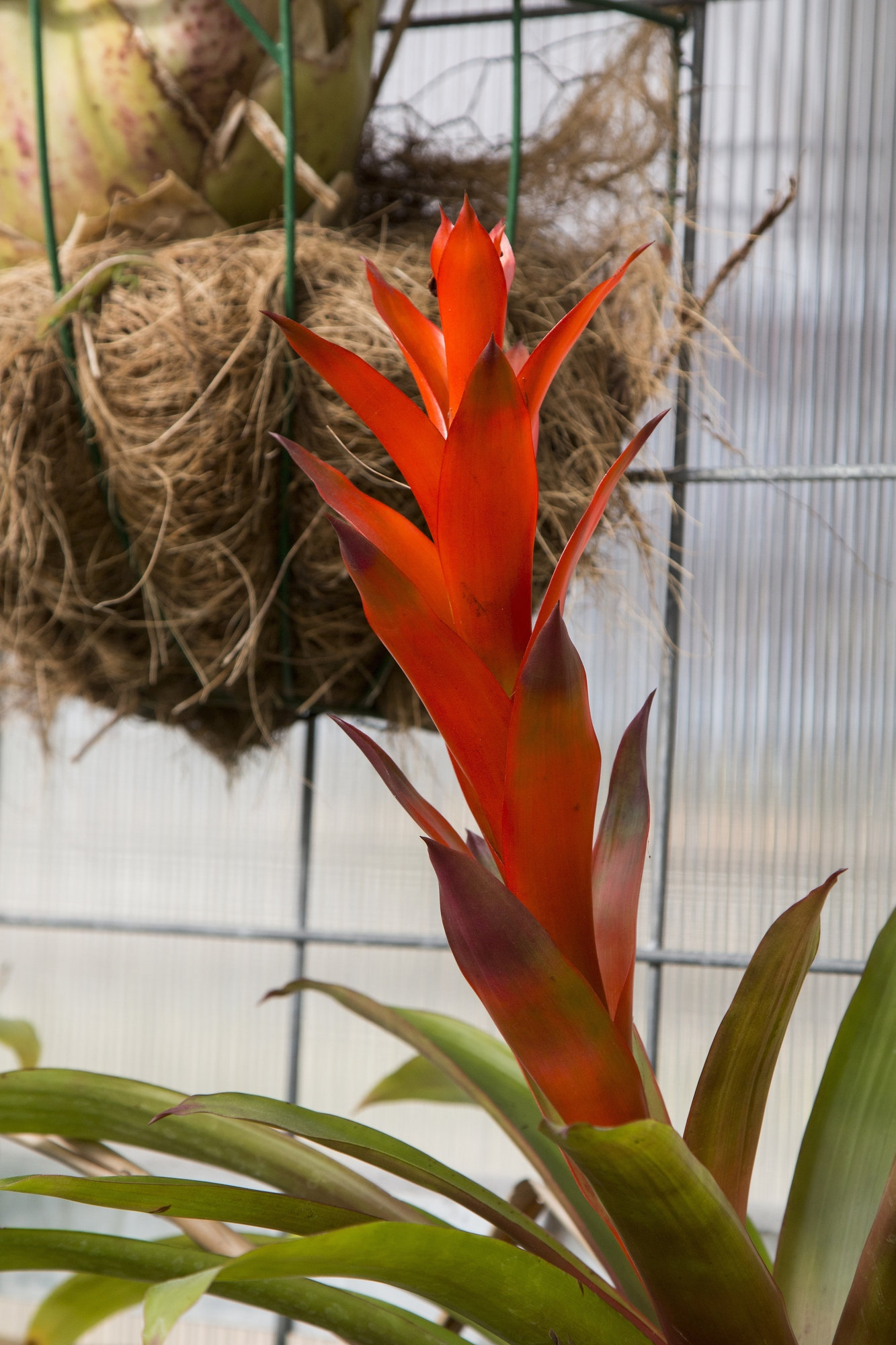
If this does happen, you can usually grab an offset of the plant and start a new one. Bromeliads are easily watered by filling the cup found at the base of its leaves, but the water that collects in the pot should be removed weekly to keep the plant free of debris or lured, dead insects. They should be placed in medium to bright light and do well in shallow pots or low soil mediums.
Pothos plants look like heartleaf philodendrons, except they have large and thicker leaves and grooved stems.
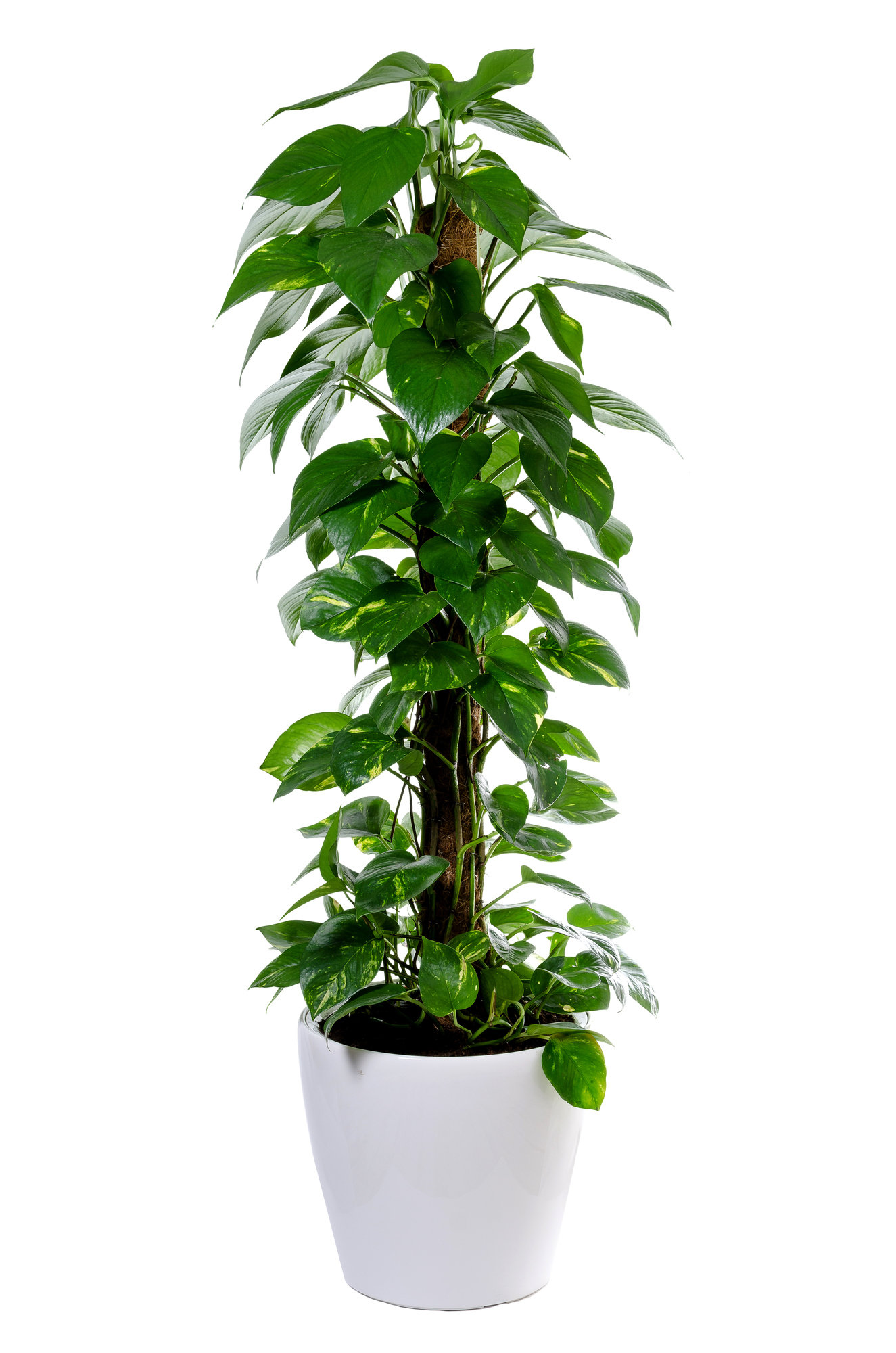
Pothos have long stems that can be placed along tables or shelves. They make great hanging plants and help serve as air purifiers by removing toxins from the air around them. Pothos are low maintenance and the color of their leaves will let you know that they need something. For example, yellow leaves might be a sign that the plant is being overwatered.
Pothos makes a great companion for those who want a plant, but don’t have much time to cater to it.
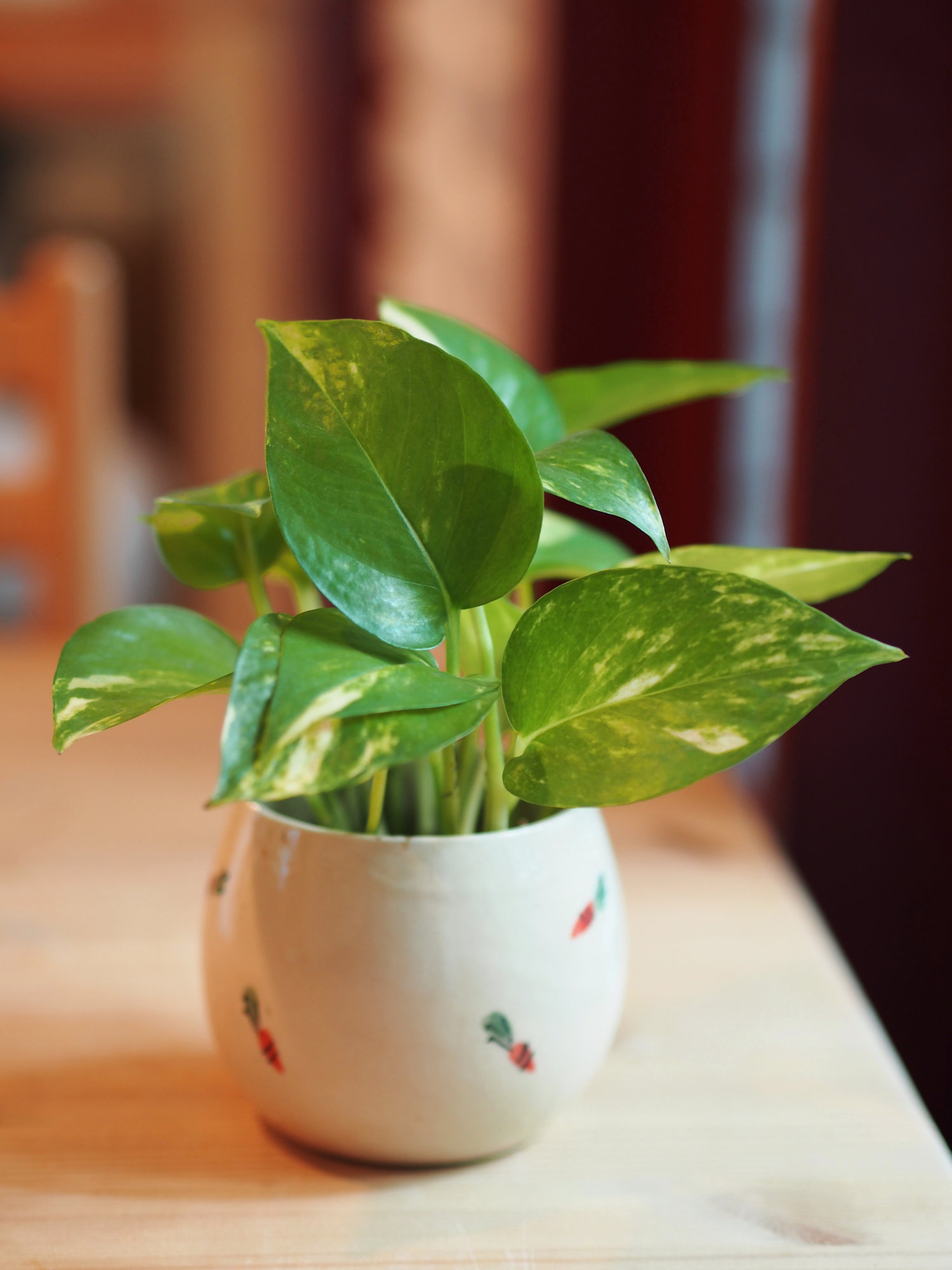
Pothos do well in several types of environments including ones that offer bright indirect light or others that only offer low light, but pay attention to how variegated the leaves of the plant are, as this can tell you if the plant does well in low light or not. The plant can only make energy from its green parts, so the more green, the lower light the pothos will be able to withstand. The plant can be grown in dry soil or a vase of water.
ZZ plants are related to peace lilies, except these are known for their thick, waxy leaves.
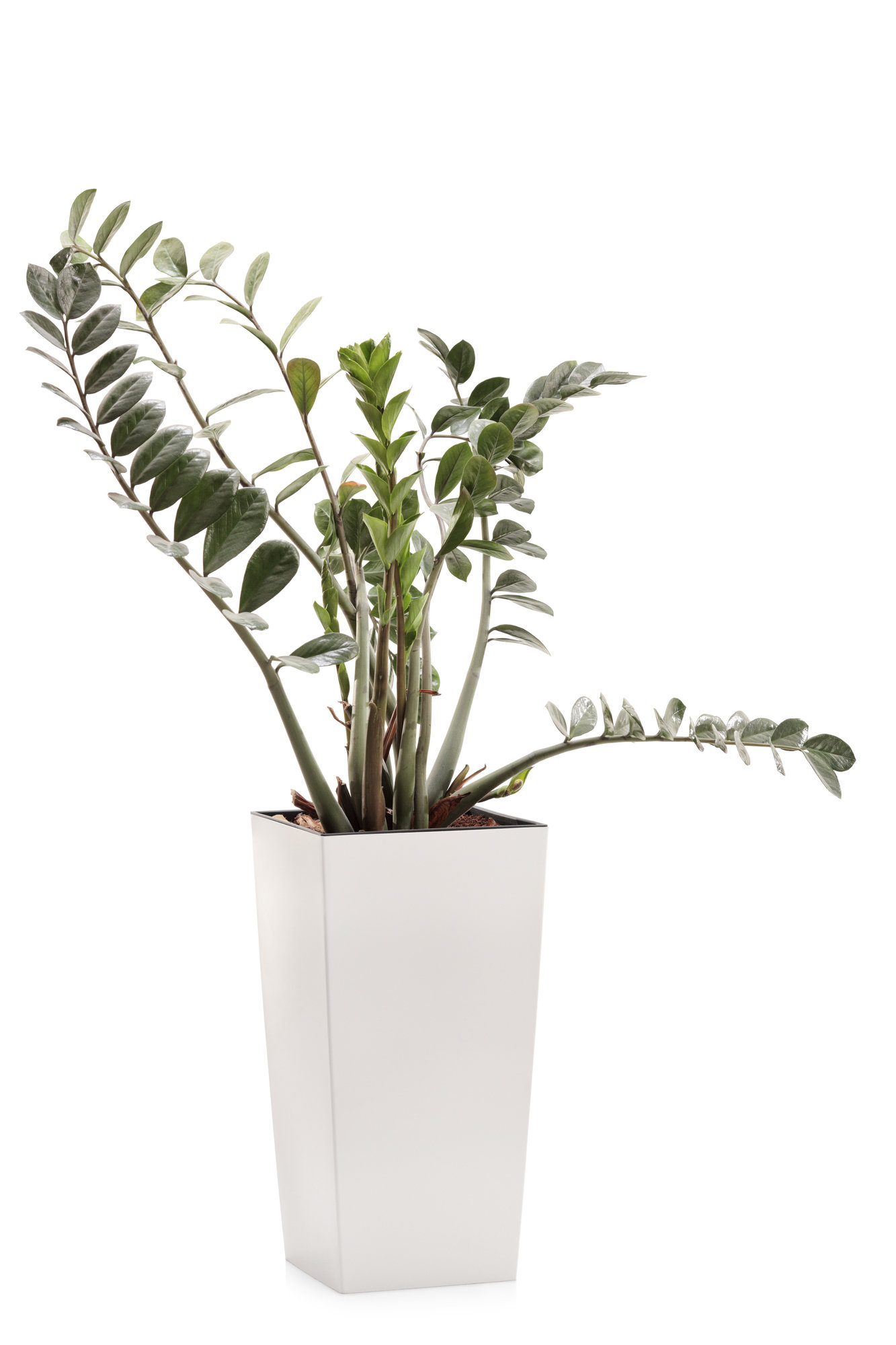
Their thick leaves almost look like large, stylish green feathers, making them great for office or home decor. In their natural habitats, ZZ plants (Zamioculcas zamifolia) experience both wet and dry conditions, which also make them forgiving houseplants. Though they are slow growers, with proper care these plants can last many, many years.
ZZ plants are good options for windowless spaces with fluorescent light, like bathrooms.
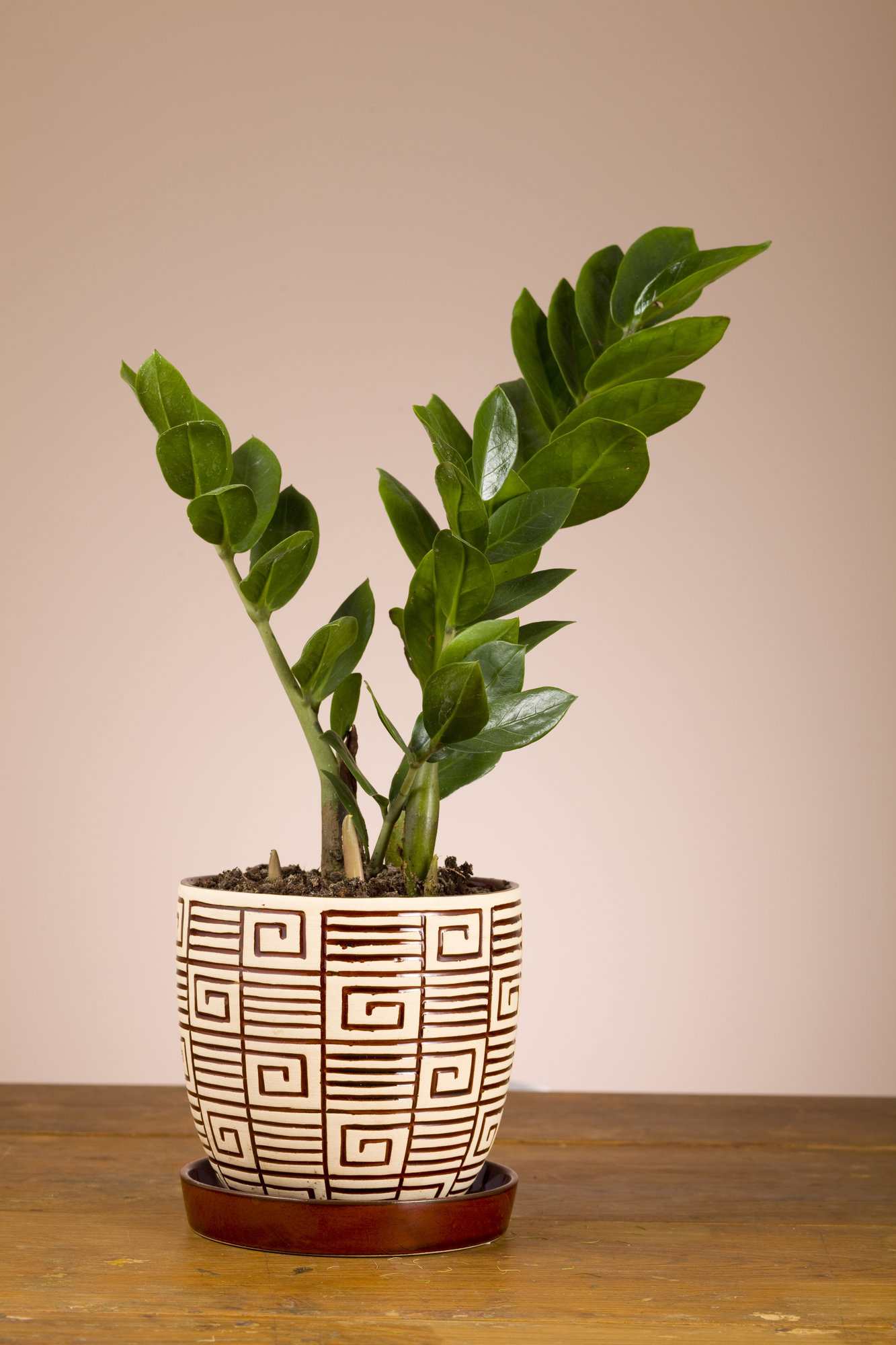
These plants enjoy moderate, indirect light best but also do well in very low light levels. Too much light can be harmful to the plant’s leaves and can result in yellowing or curling leaves, since it’s trying to get away from the light source. Though ZZ plants can survive months without water, they can grow faster if watered regularly, but only when the soil has dried out. It’s a good option for forgetful waterers.



